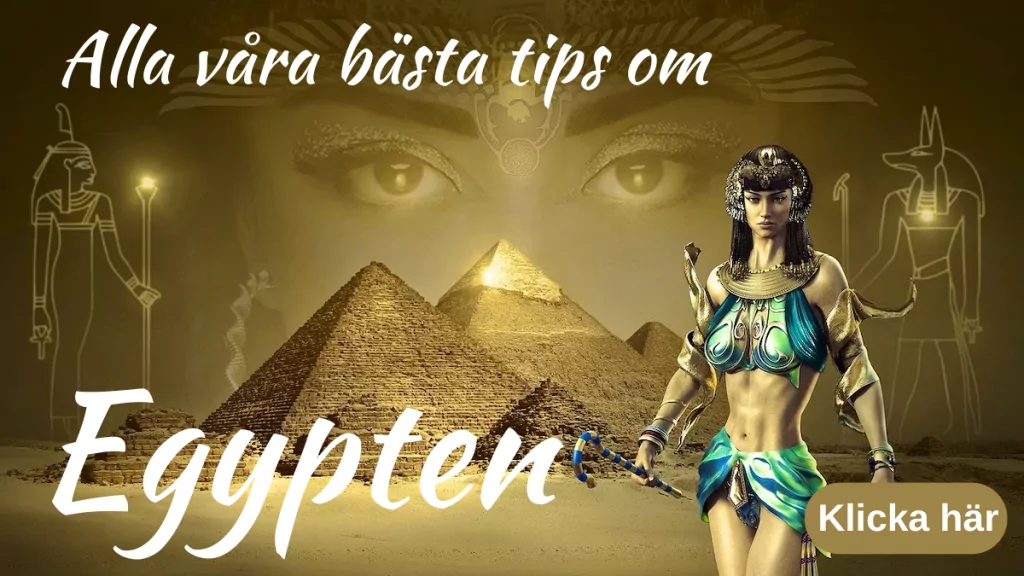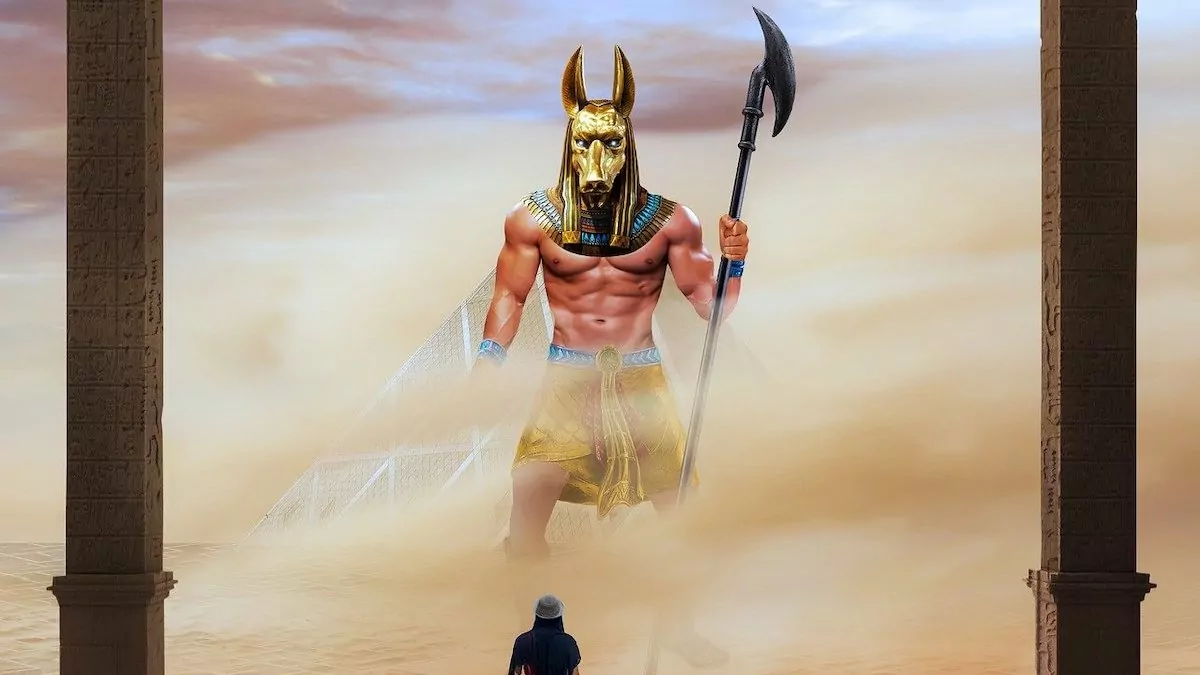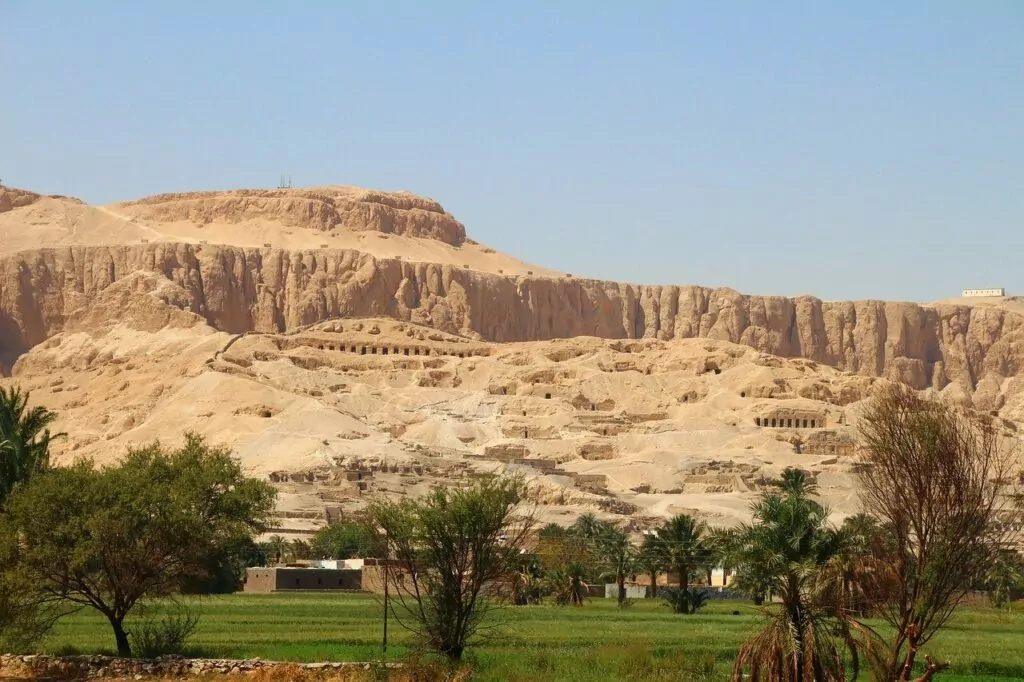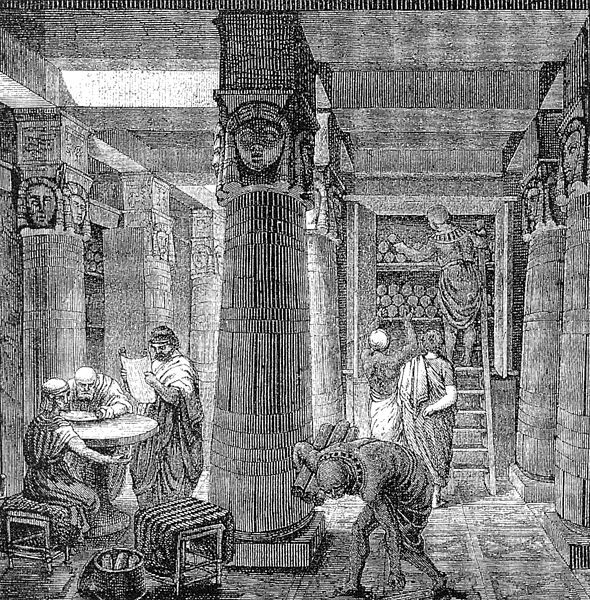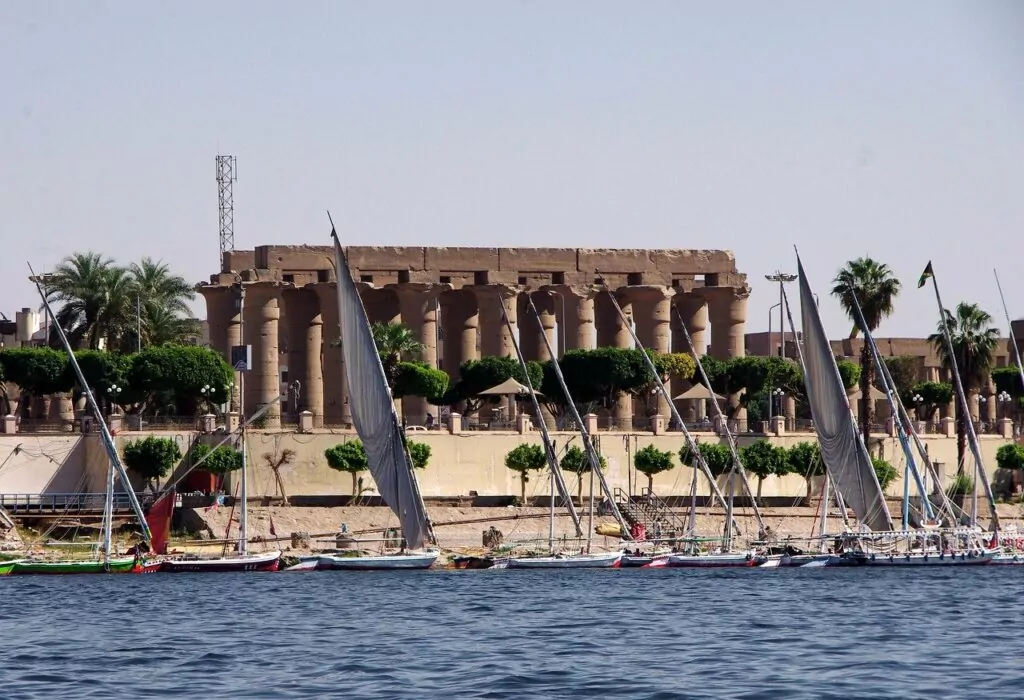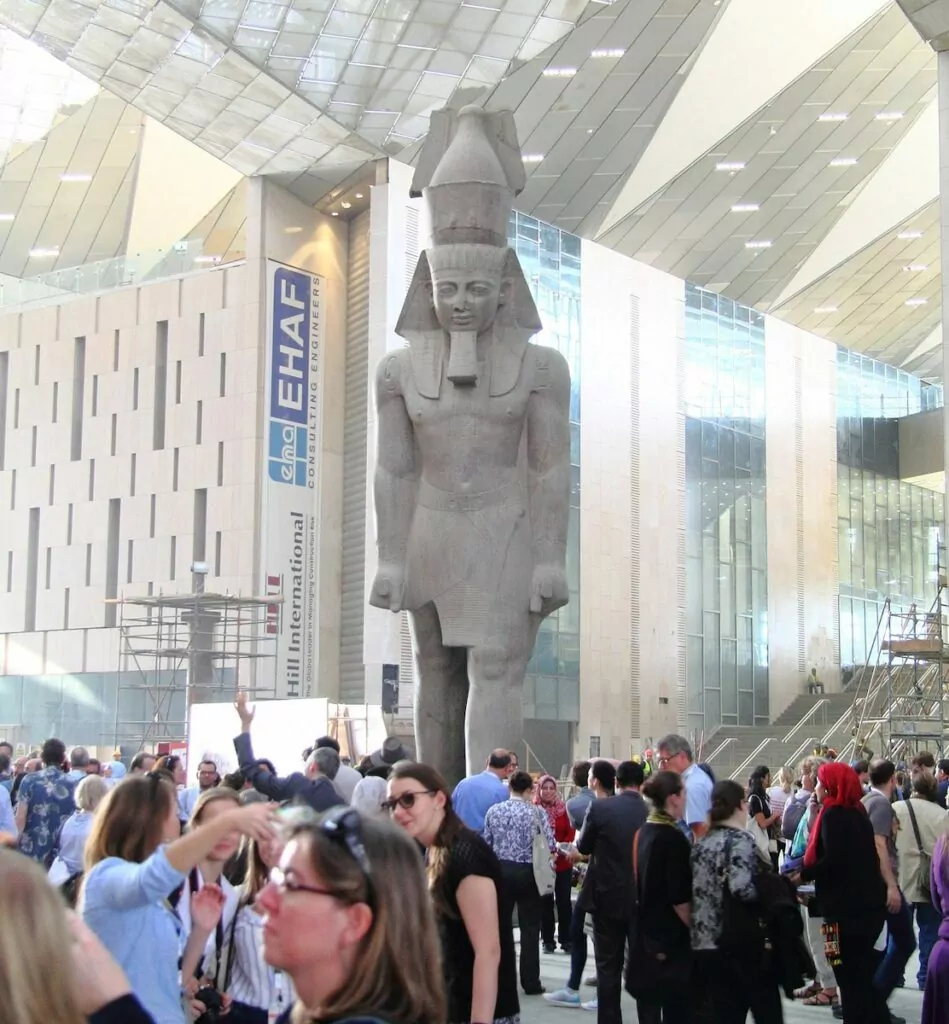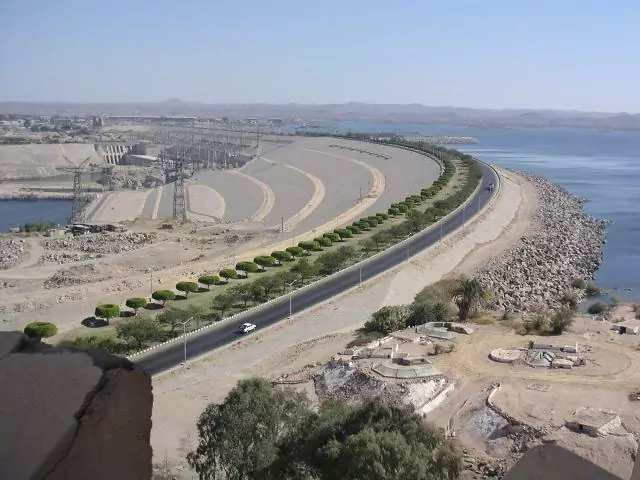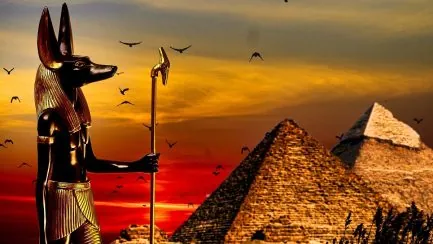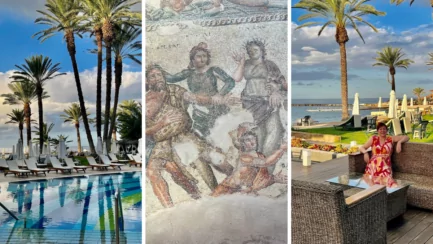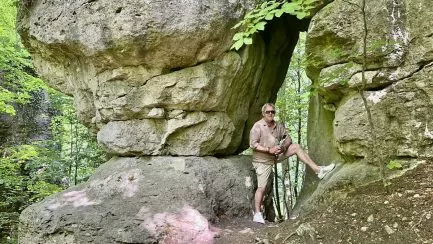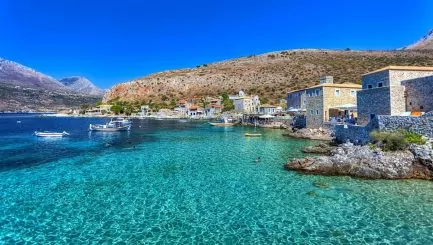Writing facts about Egypt is both fun and challenging as we are talking about over 5000 years of fascinating history. Consider that Alexandria in northern Egypt was the most important and prominent city in the world before 30 BC and that pyramids were built here in 3000 BC. Follow us to where modern civilisation started and to the mysticism of Egypt.
Table of contents
Facts about Egypt
100 million people live on 4 per cent of the country's total area, which is twice the size of Sweden - that's 100 million people in two Swedes! Most people live along the world's longest river, the Nile (6670 km), which is a freshwater river and the world's largest oasis. Without the Nile, it would not be possible to live there.
This was just a hint and if you want to know more about Tutankhamun, Cleopatra, Pharaohs, the pyramids, sphinxes, hieroglyphics, murder, betrayal and love. Here are the facts about Egypt!
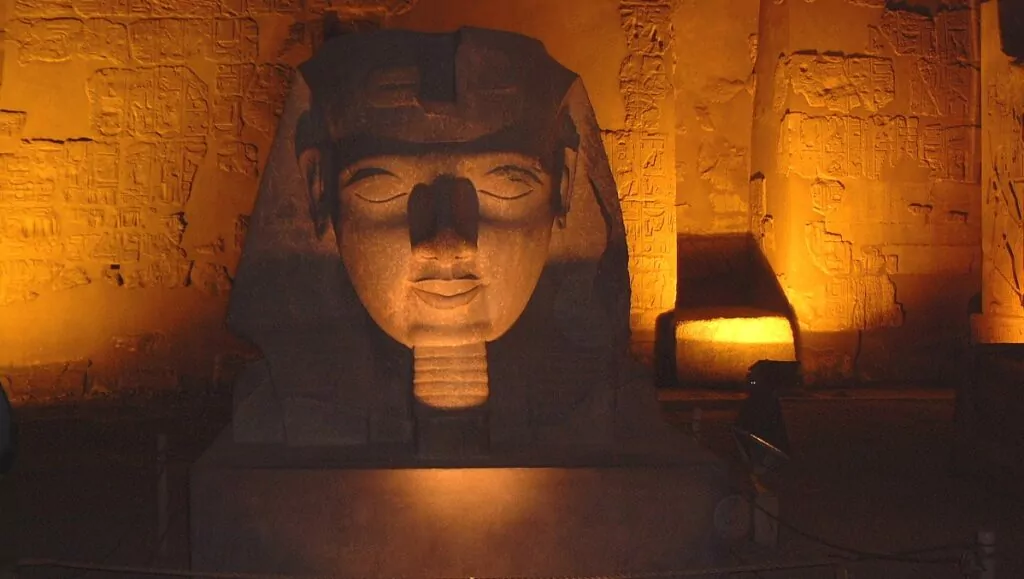
1. Cleopatra VII was not Egyptian
Cleopatra was the last ruler from the Greek Ptolemaic royal family. Cleopatra VII Thea Philopator, was born in 69 BC in Alexandria and died on 12 August 30 BC. She was 39 years old and was known to speak many languages including the Egyptian language.
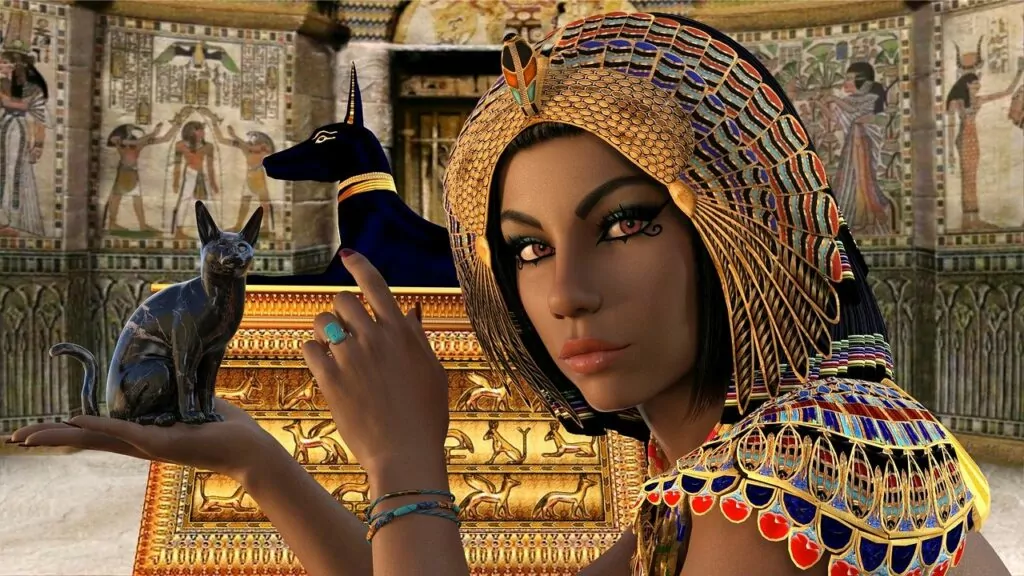
2. Were Cleopatra and Julius Cesar a couple?
Cleopatra had a son with Julius Caesar., who was named Caesarion - 'little Caesar', which was not accepted in Rome. In 44 BC, Caesar was assassinated and Cleopatra had to flee back to Egypt. Augustus enticed his son Caesarion (who was about 15 years old) with power if he came to Rome. He went and Augustus had him killed.
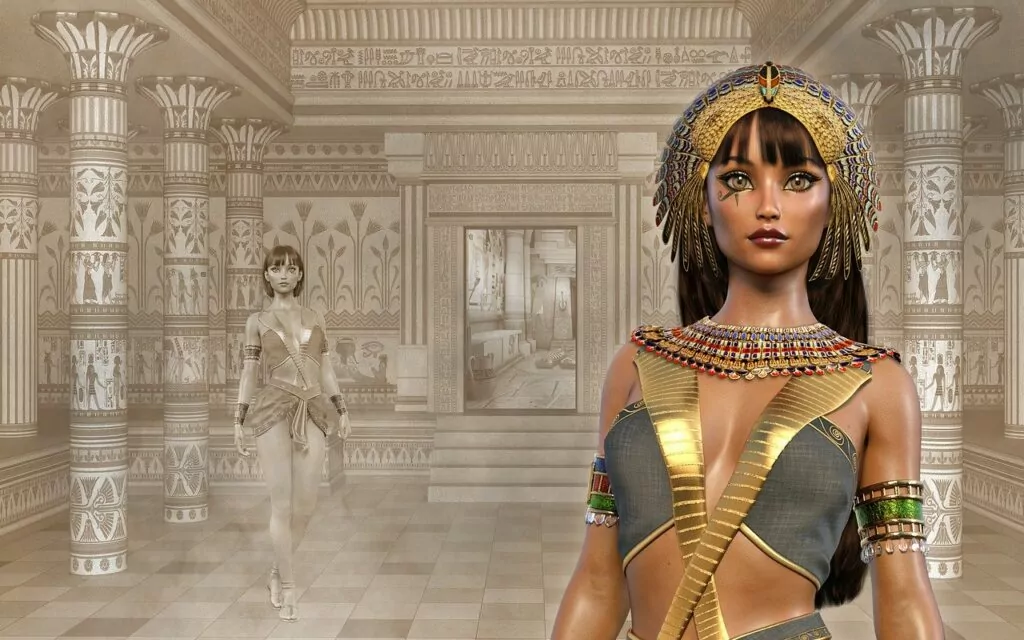
3. Cleopatra was the ruler and pharaoh of Egypt.
For ceremonial events Cleopatra dressed as the goddess Isis, to show her deity and power. After Caesar, she met the Roman politician Mark Antony, with whom she had five children.
Mark Antony divorced his wife which belonged to the powerful Octavian in Rome, and started to hand out important cities to his children. This led to war and the Romans entered Egypt in 30 BC. Mark Antony killed himself after injuries with the Romans and after a few months Cleopatra also killed herself, probably by poison.

4. Egyptian women had enormous rights in the past
Women in ancient Egypt were able to make legal contracts, buy and sell property, make wills and earn as much as men. If there was a divorce, there were agreements where the woman had her rights. Absolutely right!
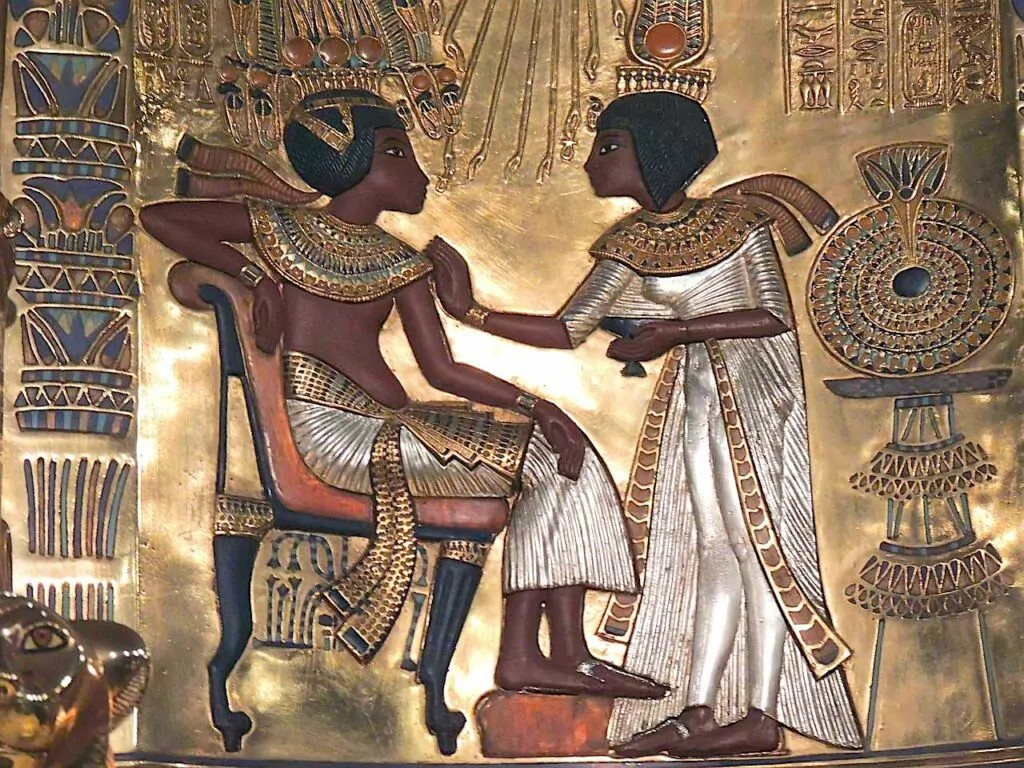
5. Egyptian craftsmen built the pyramids
It was craftsmen who built the pyramids., palaces and sphinxes, and they were paid to do so. They were the best stonemasons, carpenters, sculptors, draughtsmen and painters available. They lived in the village of Deir el Medina not far from the pyramids. The craftsmen had the god Ptah as their patron.
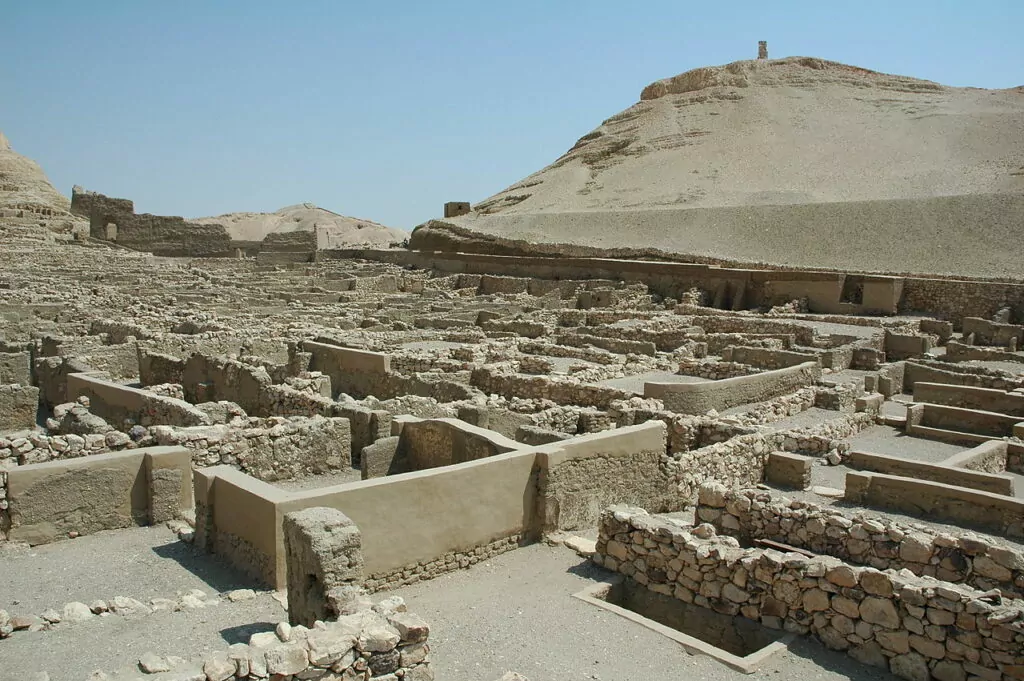
6. Sakkara is the oldest complete building in the world
Sakkara is a burial site next to the first ancient capital of Memphis. Around 2680 BC, the Step Pyramid of Djoser was built, located west of the Nile, 20 kilometres south of modern-day Cairo. The pyramid is 60 metres high and 22 metres deep, with tombs underground.
Sakkara Serapeum located north-west of Djoser's stepped pyramid was a burial ground for the bulls of Apis, a living symbol of the god Ptah. The graves of these bulls can be seen in a tunnel at Sakkara Serapeum in large granite sarcophagi weighing up to 70 tonnes and containing the mummified bulls.
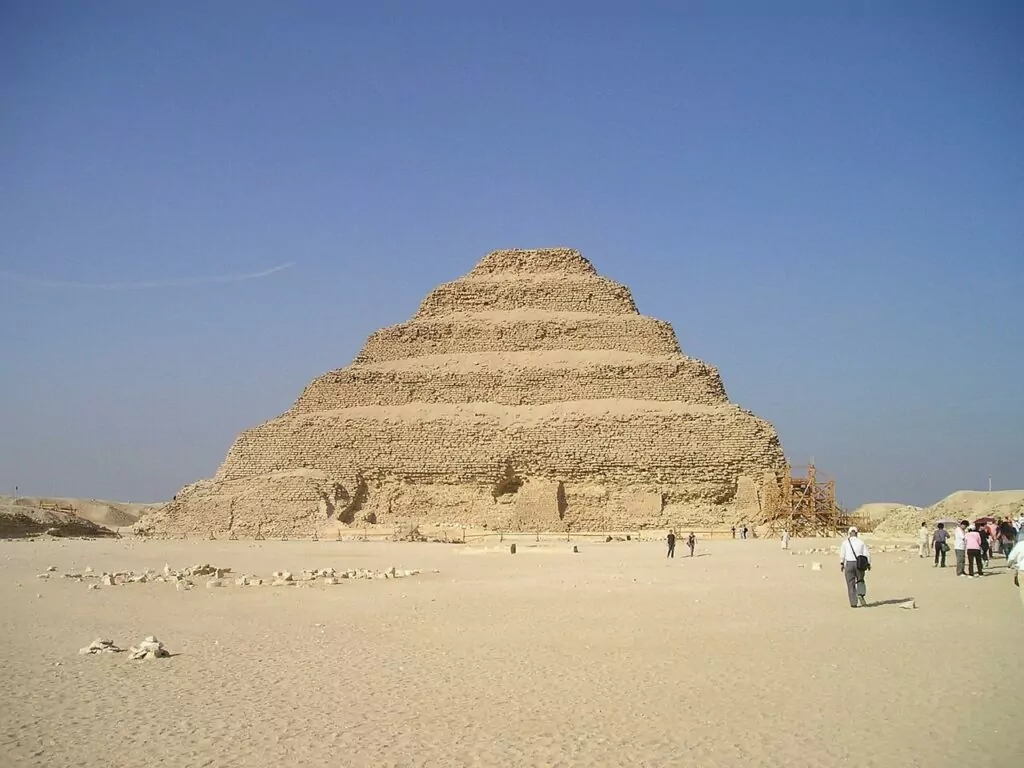
7. The Pyramid of Cheops is Egypt's largest.
Pharaoh Cheop had his funerary monument built around 2600 years before Christ. The pyramid is 138 metres high (today) and consists of 2.3 million stone blocks weighing 1.5 to 7.5 tonnes each. Cheop reigned from 2589 to 2570 BC.
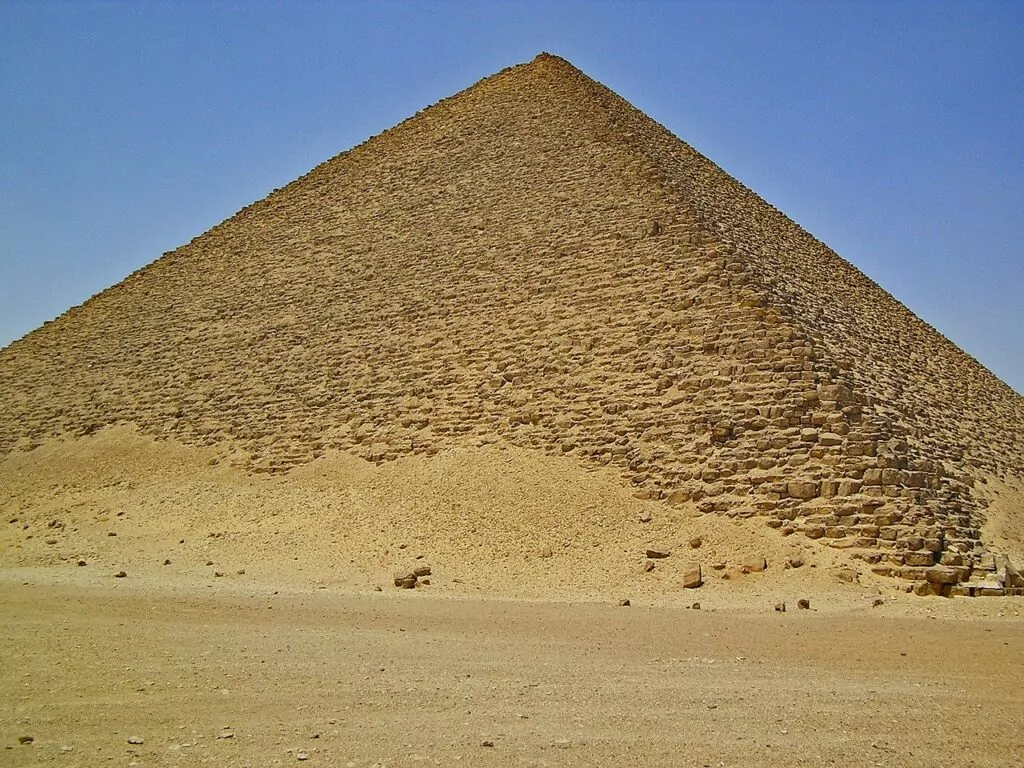
8. The Chefren pyramid is the son's burial place
Pharaoh Chefren was the son of Chepos who reigned from 2570 to 2535 BC. He also had a funerary monument (pyramid) built, but a little smaller than his father. He also erected the landmark Chephrenic Sphinx, the great lion, in front of his own pyramid.
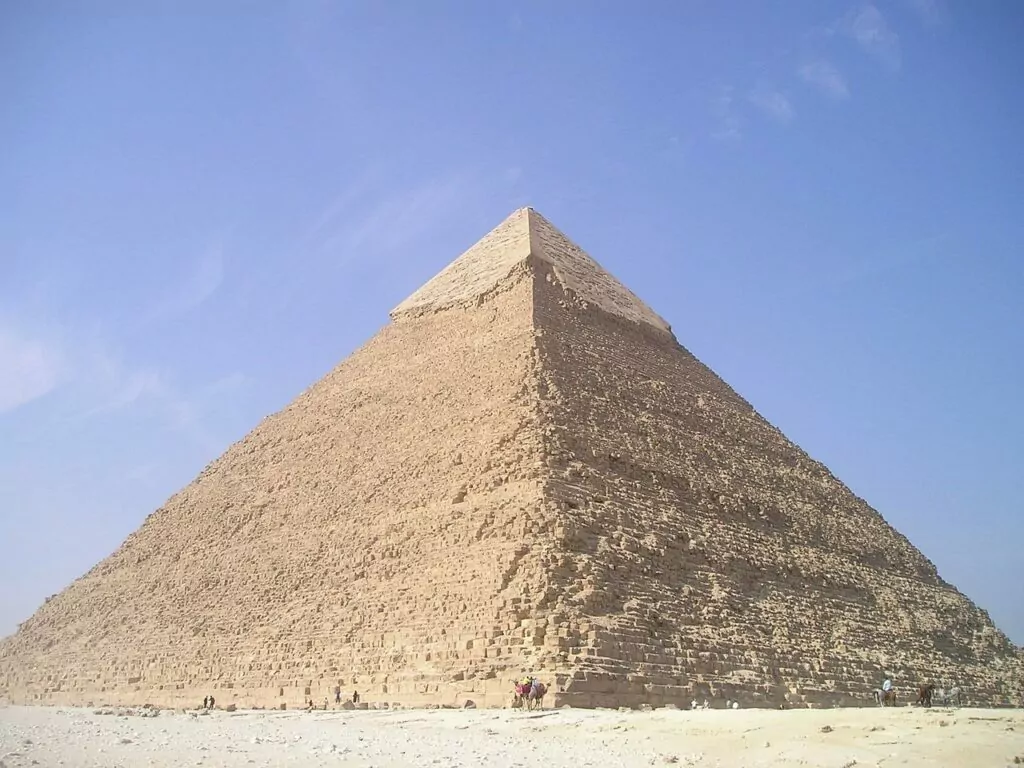
9. The chief sphinx is perhaps the most famous in the world.
Pharaoh Chefren had it carved its sphinx from a huge rock in the Giza plateau. It is not built but carved from the top in one piece. It measures 73.5 metres and is 20 metres high. It took 100 Egyptians three years to create this marvel by hand. During its 4,500 years, the Sphinx has been covered up to its neck most of the time.
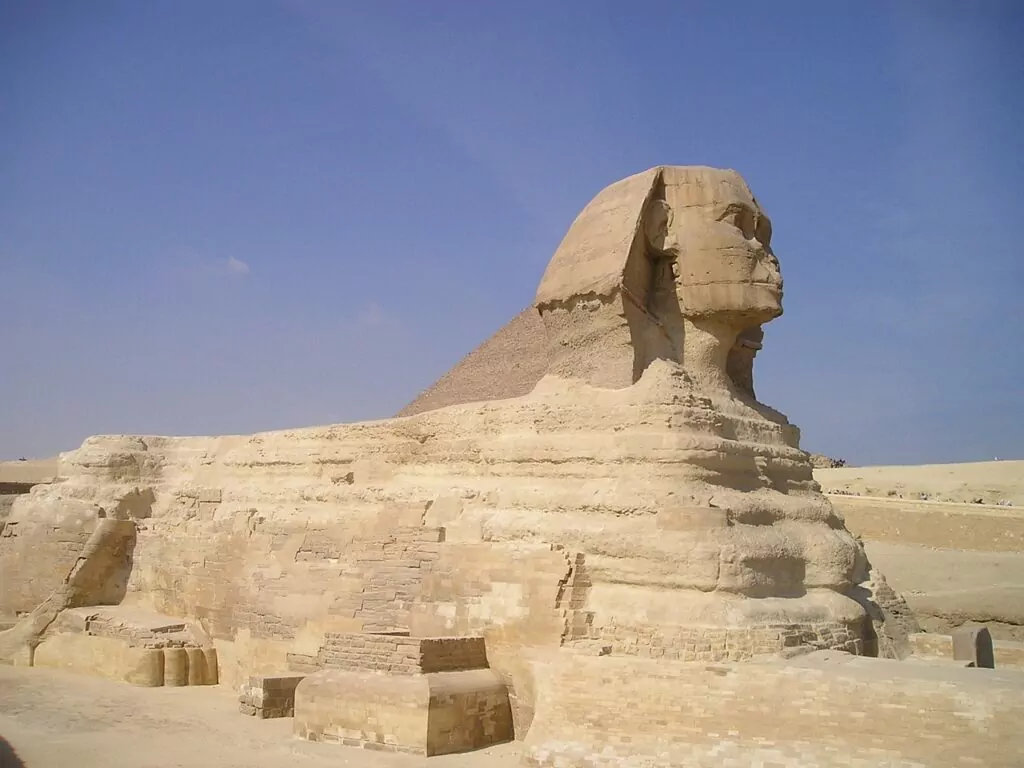
10. Pharaoh Thutmosis IV's granite tablet is a mystery
3400 years agoWhen Pharaoh Thutmosis IV renovated the Sphinx of Khafre and the tomb complex on the Giza plateau, he placed a 3.6 metre high stele (a tablet with hieroglyphics) on the site.
In 1817 they hired the Italian Giovanni Caviglia to uncover the entire Sphinx and then the granite tablet was found. Frenchman Jean-François Champollion worked for five years before solving some of the mystery of the writing in 1822.
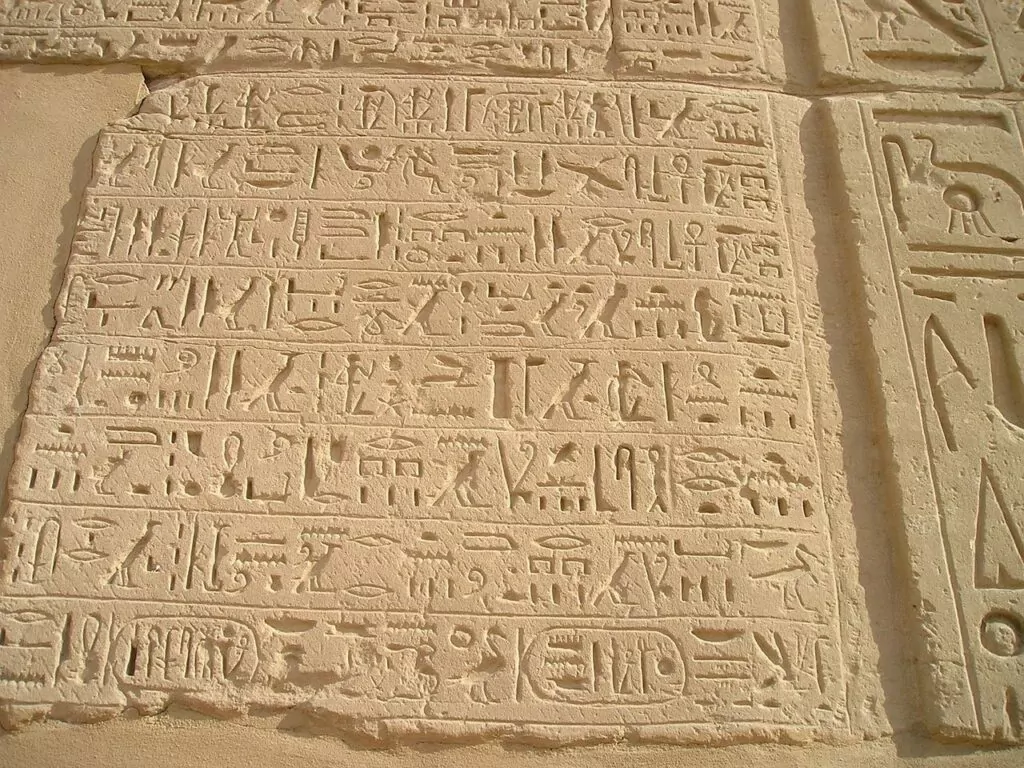
11. The pyramid of the son Menkura is the smallest of the three.
The smallest of the three large pyramids is Menkaura's tomb temple, which measures 61 metres in height. Menkaura was the son of Chefren and intended to build his pyramid a little classier.
The first 16 lines is red granite, but after that they used limestone, as in the others. Probably he and his son (Shepseskaf) died while completing the pyramid. He reigned around 2535-2520 BC.
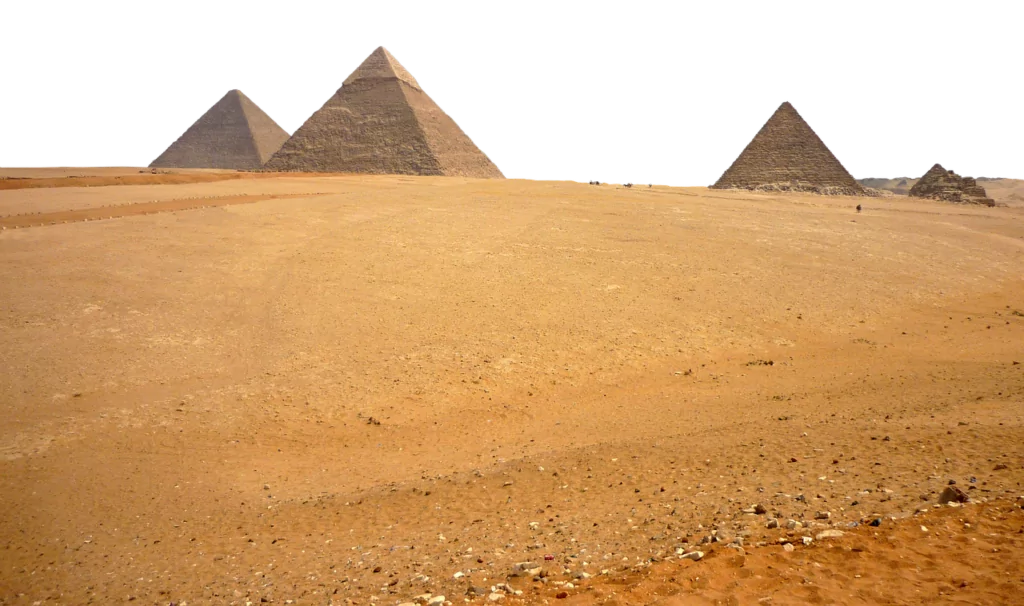
12. The Valley of the Kings in Egypt is a miracle
After not building pyramids as burial monuments anymore, they created a burial valley or 'Valley of the Kings'. They cut into mountains and buried the pharaohs in the mountains, which were later covered with sand.
Here are over 60 huge rooms for pharaohs, which are painted and decorated, and new tombs are found all the time. Some are for multiple kings and can be up to 300 square metres in size. Thutmosis I was the first to dig his tomb here.
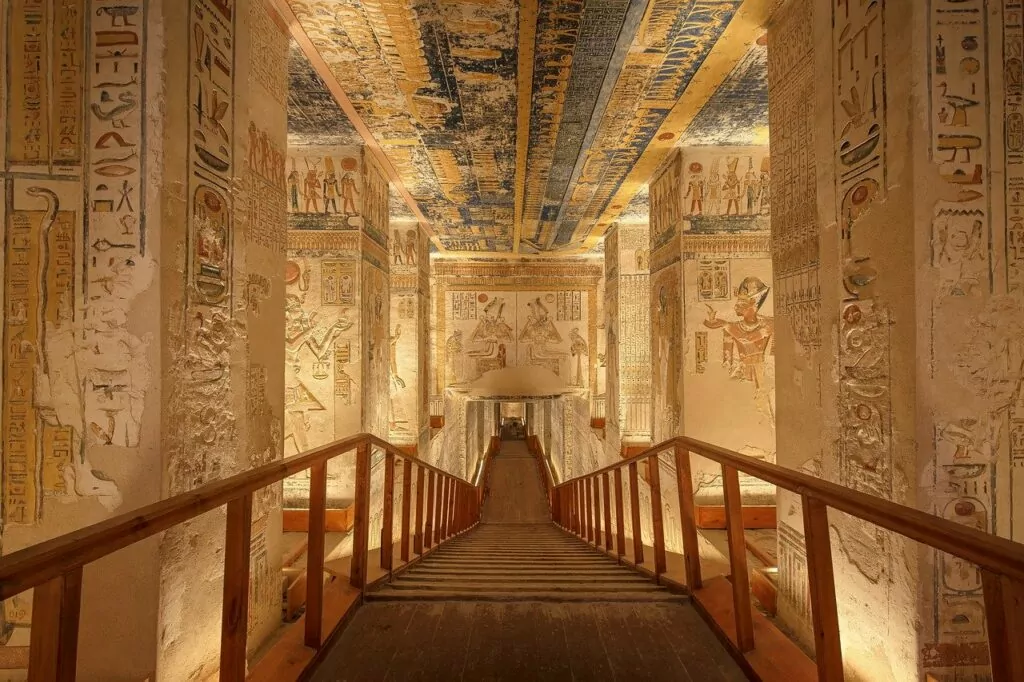
13. Valley of the Queens - Nefertari's tomb is the most beautiful.
Tomb of Nefertari in the Valley of the Queens is considered one of the most beautiful ever discovered. Located 1.5 km from the Valley of the Kings, the valley was originally a burial ground for royal children, today (2022) with around 98 graves.
Pictures of Nefertari, found across Egypt, indicate that she was known for her beauty, and poetry written for her by Ramses II can be found in her tomb.
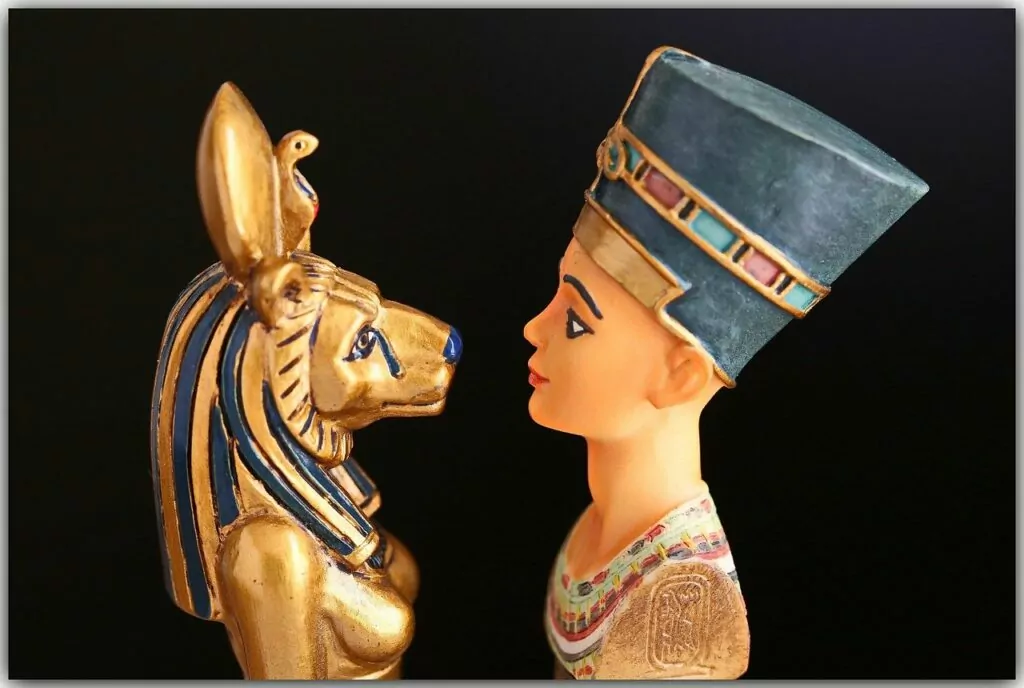
14. Mummification in Egypt is an art form
The Egyptians believed that it was possible to live again after death, but this could only happen if the body was preserved in a life-like form that the spirits called ba (personality) and ka (life force) could recognise.
The body could then act as a bridge between the spirits of the deceased and the living victims. The Egyptians believed that the heart must remain!
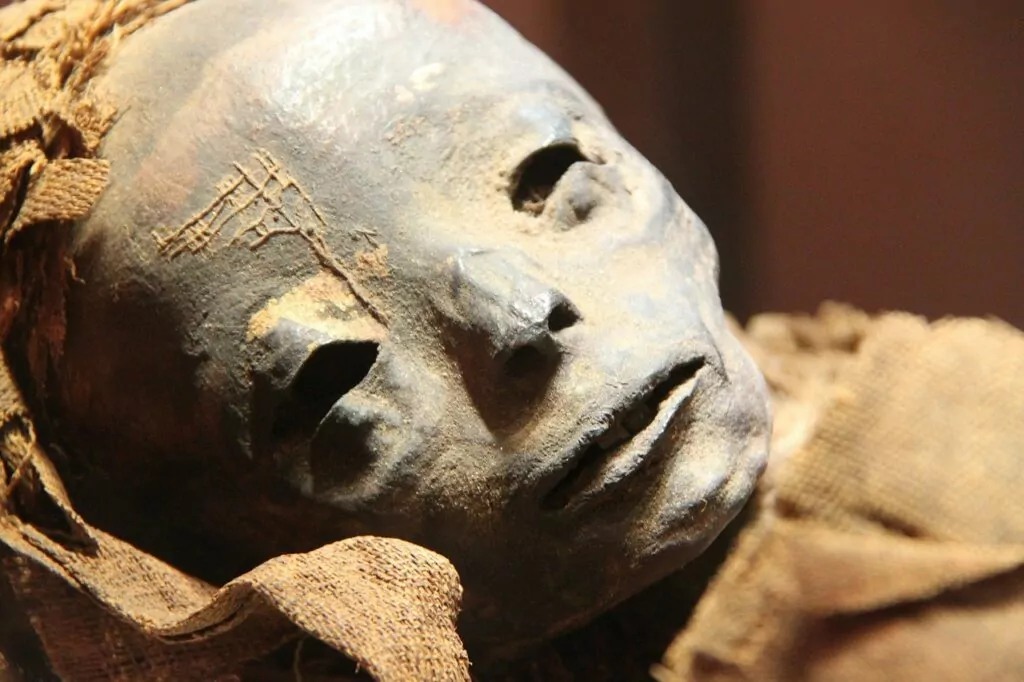
15. Tutankhamun had the smallest tomb
Those who killed Tutankhamun did not want to meet him in the afterlife, and took out his heart. He was given a small tomb under Ramses IV not worthy of a Pharaoh and hidden in the Valley of the Kings.
Tutankhamun's successor Pharaoh Ay, who did not want to know about Tutankhamun, is funnily enough buried next to Tutankhamun's grandfather Pharaoh Amenhotep III. Where Tutankhamun would probably have been buried?
16. Tutankhamun is the irony of life
Tutankhanom had deformities as a child, was on a crutch at the age of 15 and at 19 was murdered and hidden in the Valley of the Kings. After his death, he had his heart removed so that he could not continue to the next life.
Tutankhamun was found and put Egypt on the world map in his next life. He became the only pharaoh whose name almost everyone recognises. What an irony!
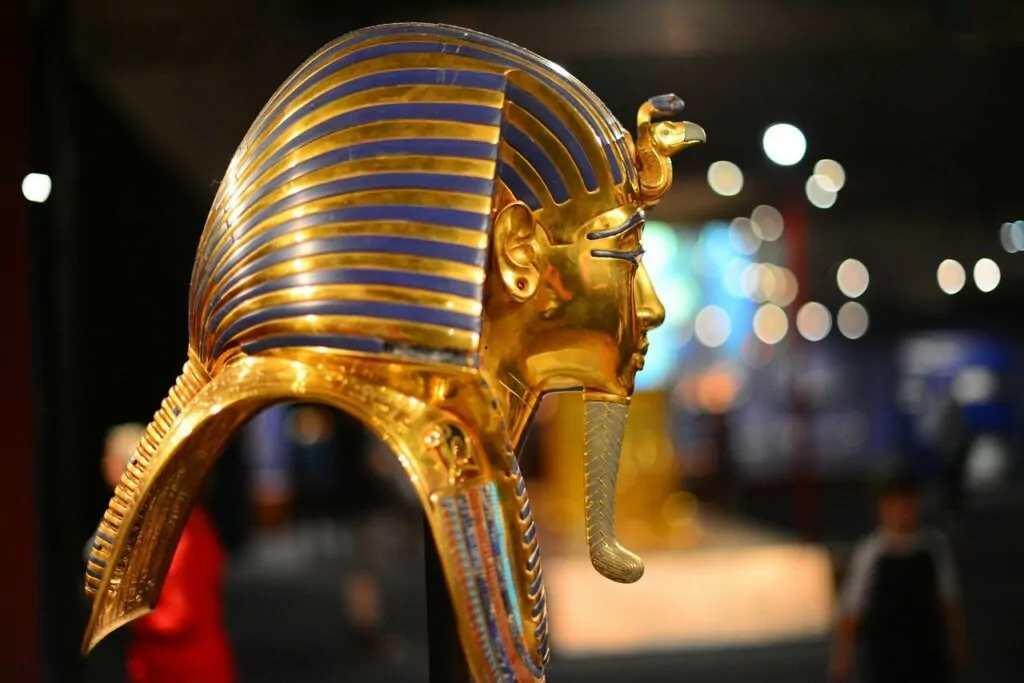
17. Tutankhamun's tomb is the only one that was not looted.
Archaeologist Howard Carter was working with the Egyptian government to look for new finds in the Valley of the Kings. He had been working for years, and the week they were about to finish, a donkey went through the floor of Ramses IV's tomb.
4 November 1922 the tomb of Tutankhamun was found, the only tomb that was not looted. Over 5000 artefacts, the burial mask, and the solid gold coffin are still in the museum in Cairo.
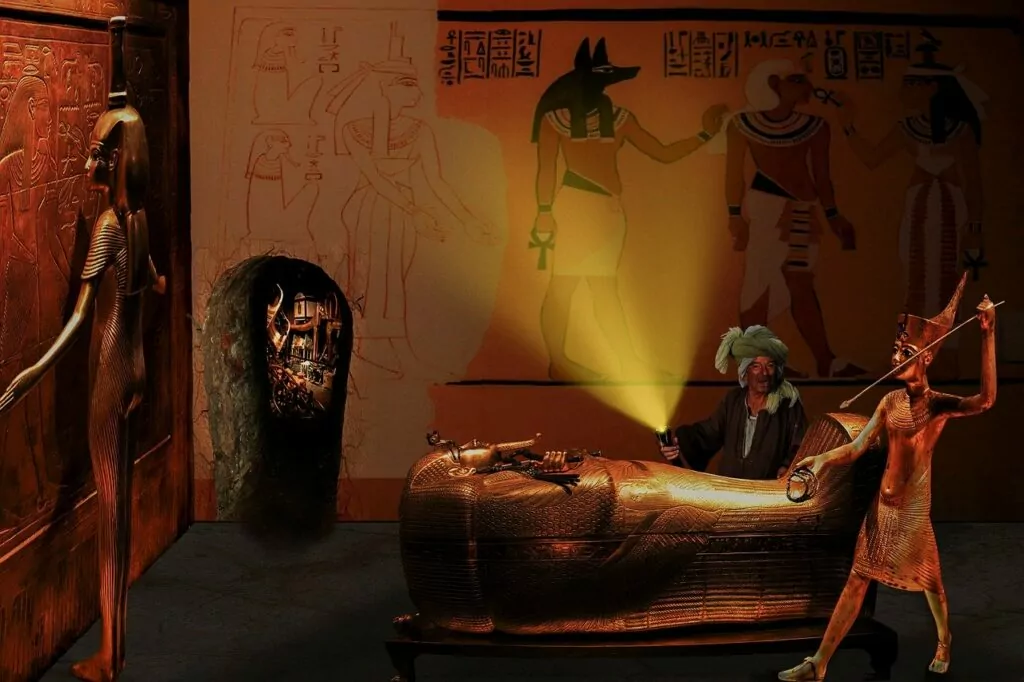
18. Tuthankhamun was in the most expensive coffin in the world.
Two of Tutankhamun's three coffins were made of wood, covered with gold. The innermost and last one is in thicker layers of gold and is 1.88 metres long and weighs 110.4 kg. If it were to be scrapped today, it would be worth over £1 million.
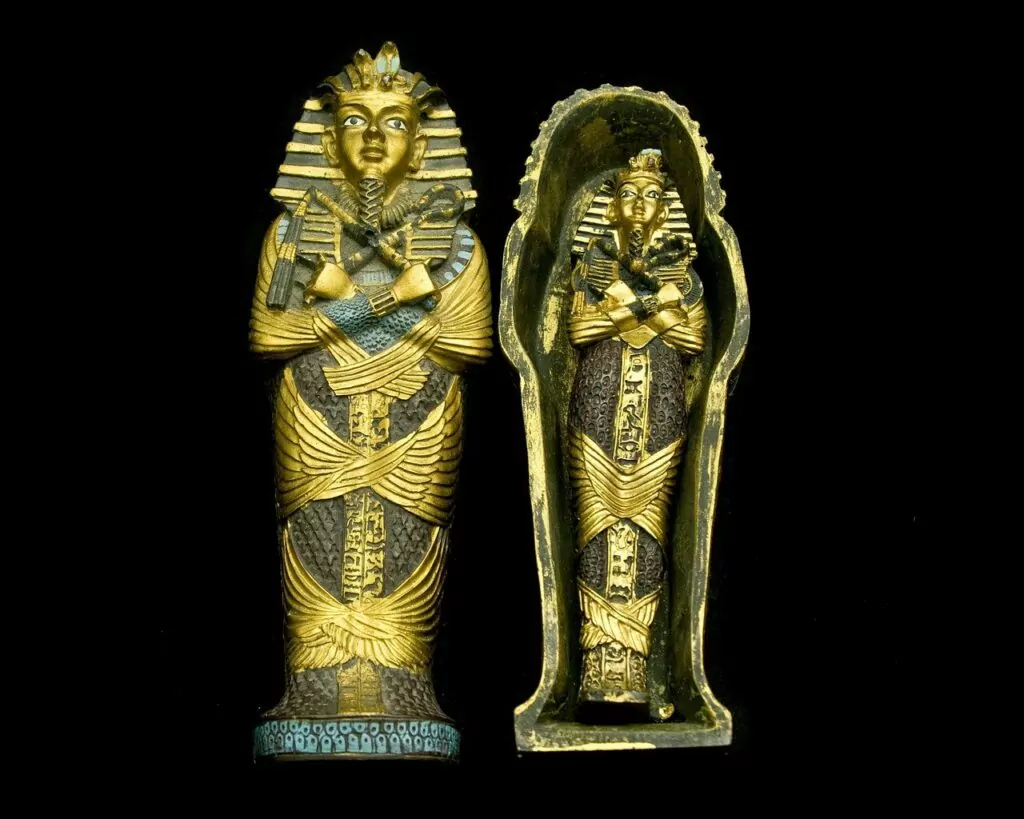
19. Egypt has seven UNESCO World Heritage Sites
Egypt has seven Unesco world heritage sites. The country also has two heritages that were part of the Seven Wonders.
- Abu Mena
- Ancient Thebes with the cemetery
- Historic Cairo
- Pyramids of Giza with the Sphinx and the Valley of the Kings
- Nubian monumentst from Abu Simbel to File
- St Catherine's Monastery in Sinai
- Valdalen
20. Alexander the Great founded Alexandria
In 332 BC Alexander the Great captured Egypt and proclaimed himself Pharaoh. He also created Alexandria (formerly Rakotis), and invited his army to settle there and marry the Persians.
Now Greece/Macedonia ruled until 30 B.C. when the Romans took Egypt
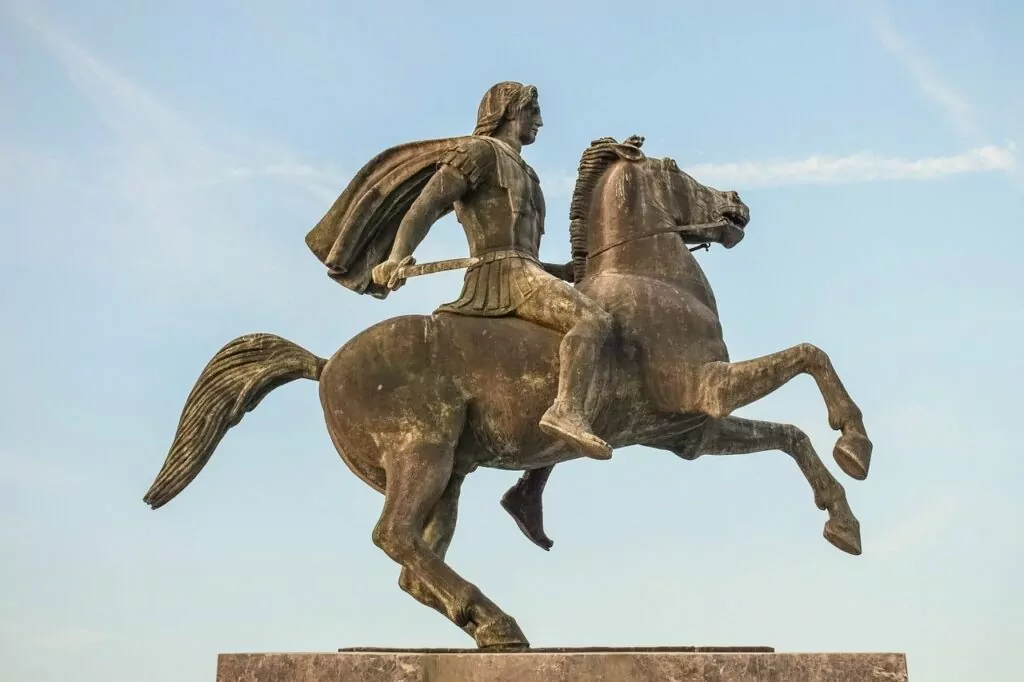
21. The world's oldest shirt is 5000 years old
"The Tarkhan suit" was found during excavations 50 km south of Cairo, at the ancient cemetery of Tarkhan. The shirt is estimated to date from around 3482-3102 BC.
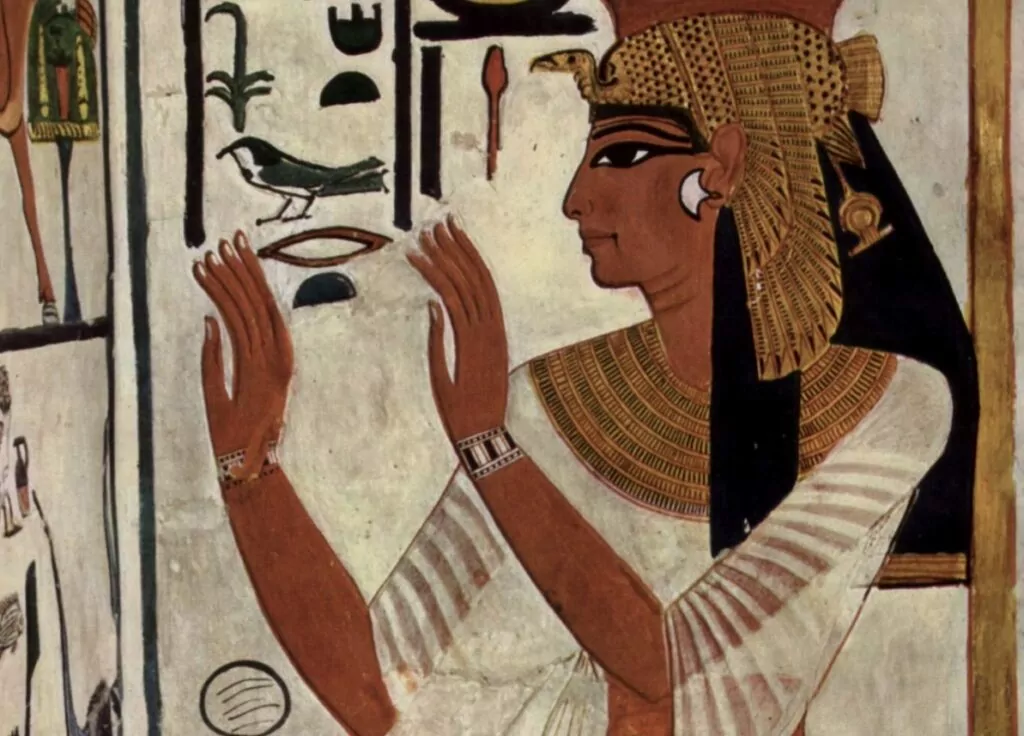
22. Whales landed in Wadi Al-Hitan in western Egypt.
Wadi al-Hitan or Val valley is a palaeontological site in Egypt, about 150 km southwest of Cairo. The site is now a UNESCO World Heritage Site, and what do we find there? Skeletons of whales from 40 million years ago when they went from land-based animals to sea-based mammals. Lots of whale skeletons with legs, feet and toes, which is obviously a huge treasure.
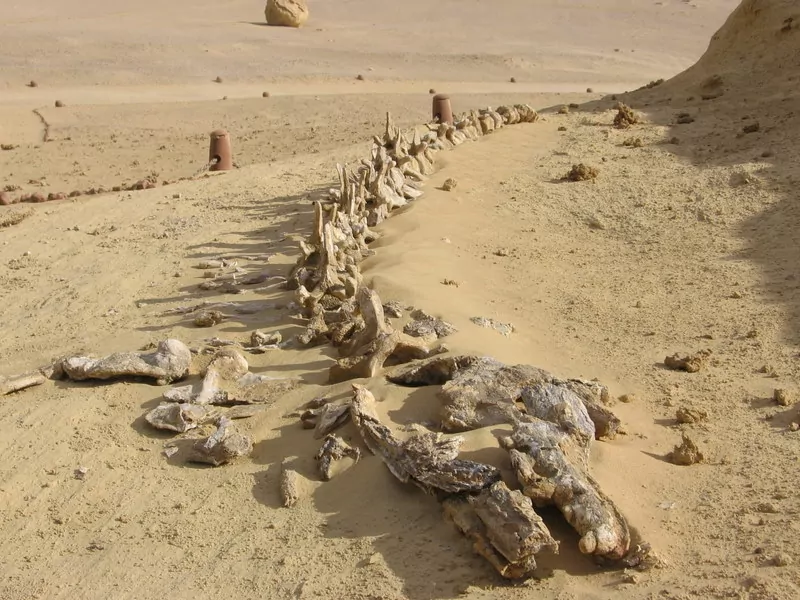
23. First peace treaty made in Egypt
Ramses II and King Hattusili III agreed to help each other after many years of war and after the 'Battle of Kadesh', between 1275 and 1259 BC. After the war, the peace treaty was carved on a stone tablet (called a stele) that still exists today.
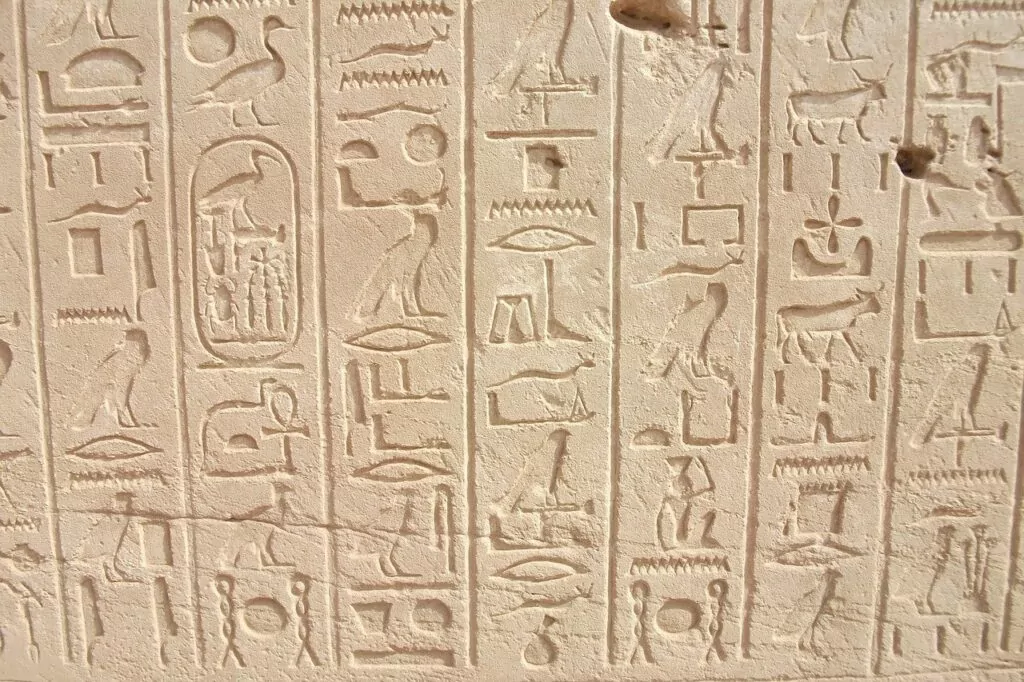
24. 'Sennet' was the most popular board game in ancient Egypt.
The board game Sennet had 10 x 3 squares and was very popular. Each player had five light-coloured or five dark-coloured blocks or pieces of bone to move on the board. Paintings show Nefertari playing the game and Tutankamon taking it to his grave.
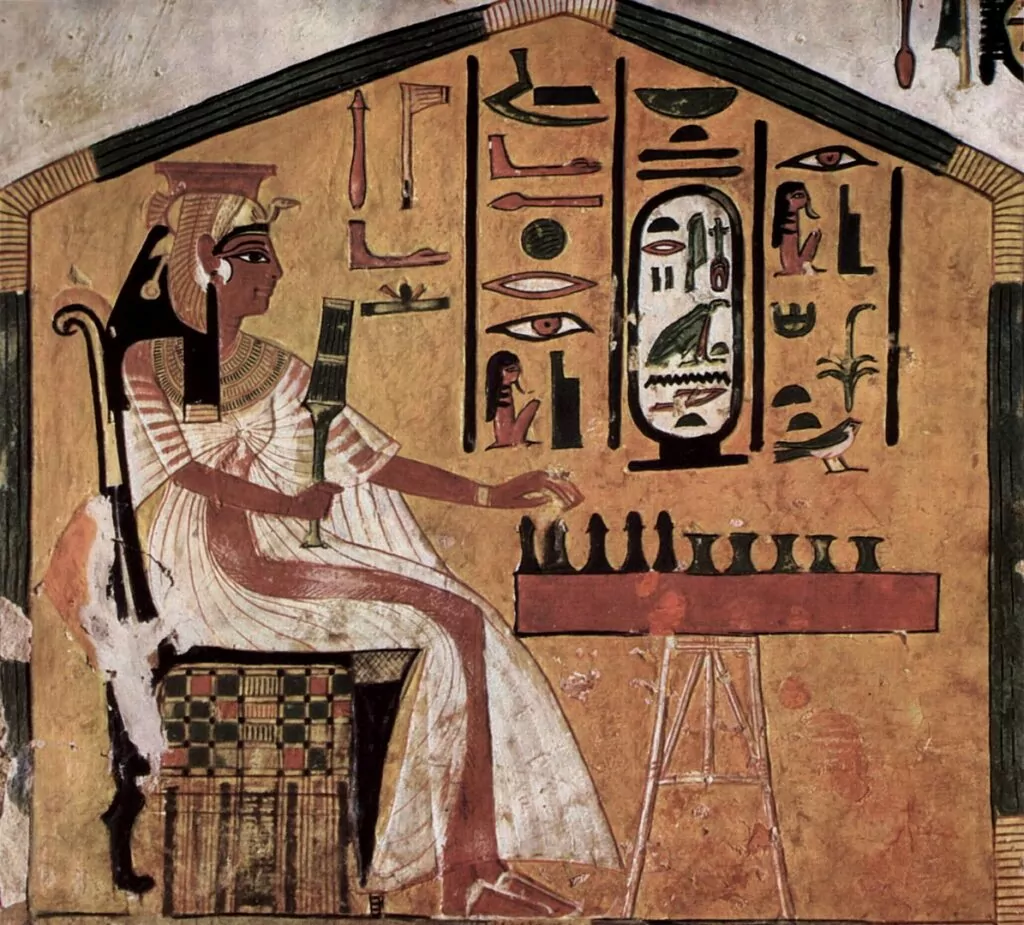
25. 300 years ago, people went on strike in Egypt.
The workers who built the tombs of kings were important, and they needed a place to live. The labourers who built the royal city of Deir el-Medina were not paid enough. They went on strike against Ramses III in 1100 BC and were vindicated.
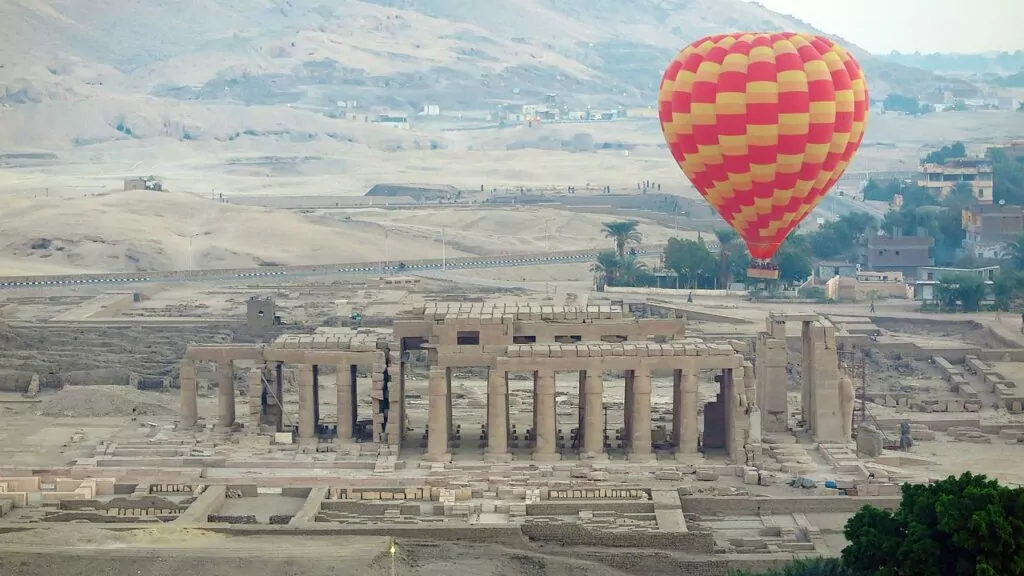
26. Egyptian doctors were specialists 450 years before Christ
The Greek historian Herodotus wrote about doctors from Egypt who specialised in 450 BC. One was called an ophthalmologist and another a dentist.
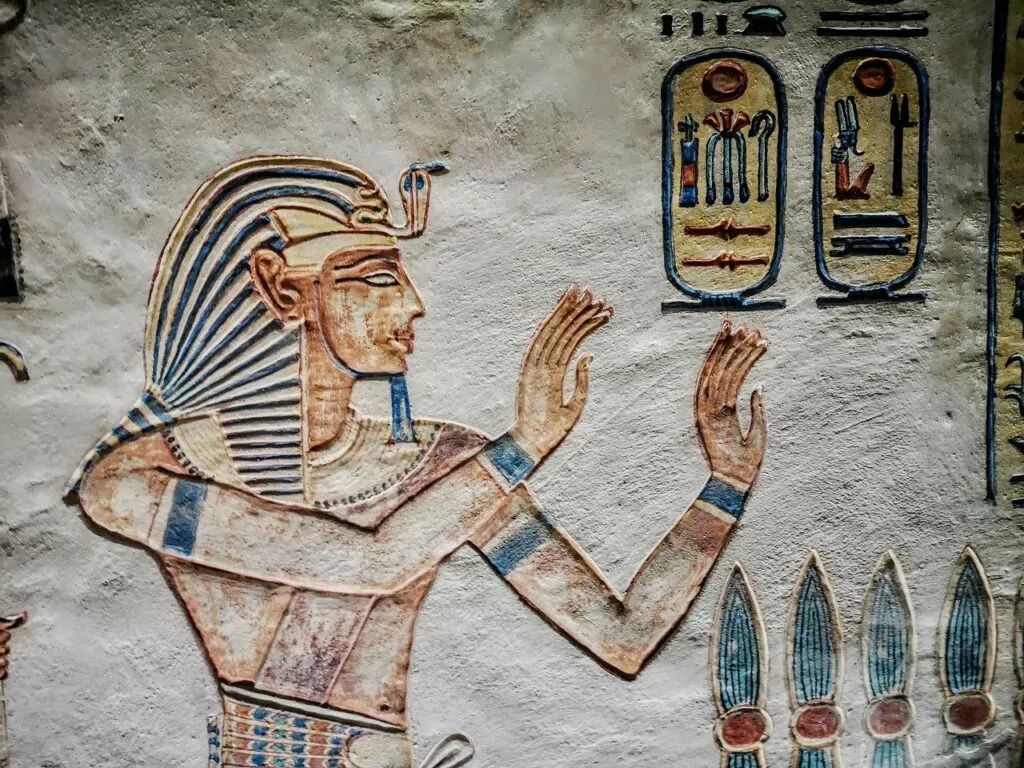
27. Both men and women wore make-up in Egypt
Egyptian men and women put on a lot of make-up, which gave them the protection of the gods Horus and Ra. The Egyptians believed that make-up had magical powers. For example, they used oil, myrrh and cinnamon.
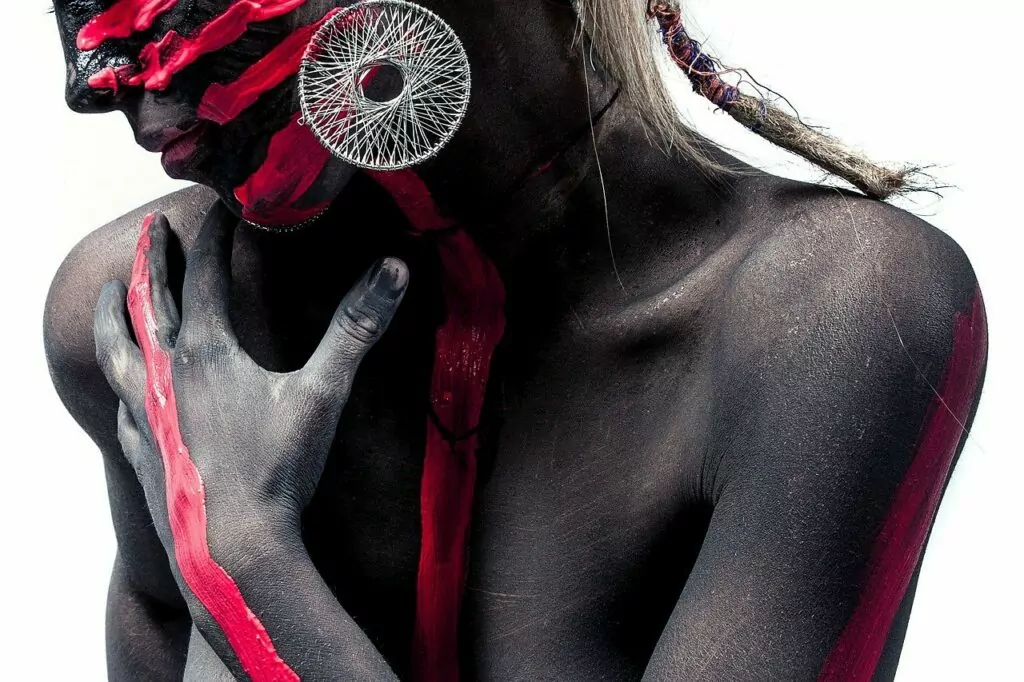
28. The Rosetta Stone was the key to the hieroglyphs
20 August 1799 were Napoleon's men and built at Rosetta near Alexandria. Here you will find a large black boulder with writing on it. It was made in 197 BC and was the key to the forgotten ancient Egyptian pictorial script.
The stone was carved in Greek and Egyptian, with both hieroglyphics and demotic writing, which is a cursive version of the former. A dictionary was found here! There are about 800 hieroglyphs that are read normally from right to left.
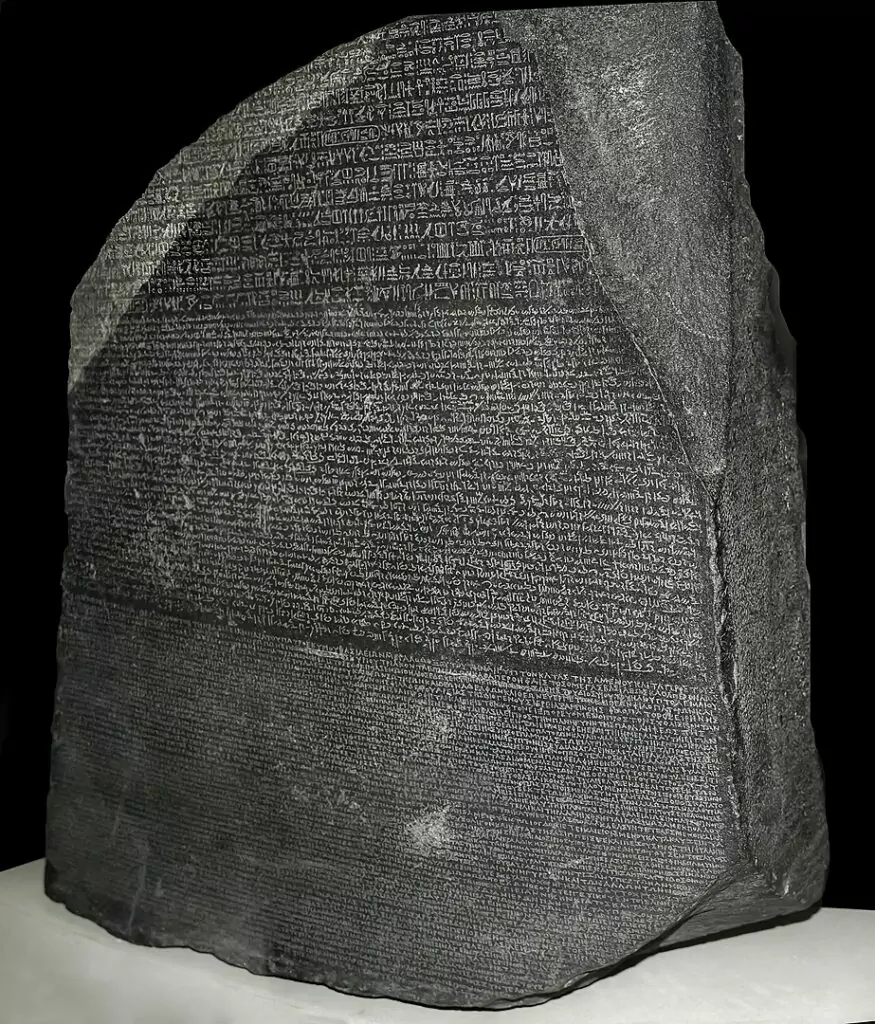
29. Aswan is one of the driest settlements in the world
Aswan is located in southern Egypt and is one of the driest settlements in the world. The Nubian people don't even bother to build roofs because there is no rain. Aswan, formerly known as Syene, was famous for many things:
- Granite was brought from Aswan to build the pyramids.
- The Greek scientist Eratosthenes proved in 210 BC that the Earth is round, and that was in Syene.
- The island of Elephantine is an ancient city in the Nile where papyrus finds in Armenian have been discovered. The ruins of Elephantine are a UNESCO World Heritage Site. Nubian monuments from Abu Simbel to File
- File Island in the Nile with ancient temple complex
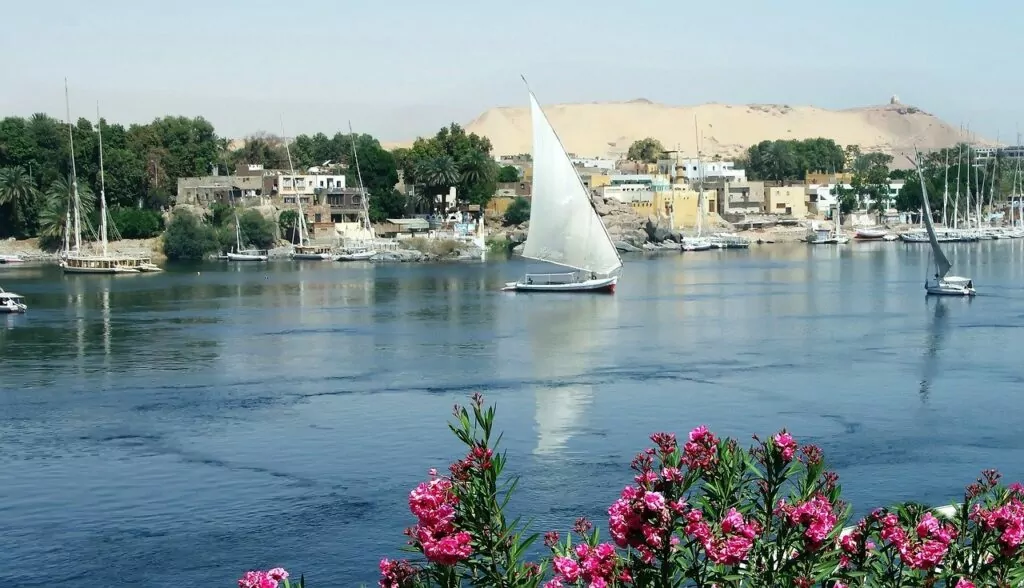
30. Geber el Silsila in Aswan is a site with lots of artefacts.
Silsila is a place is a quarry along the Nile that supplied sphinxes to several sites in Egypt, such as all 600 lion sphinxes between Karnak and the Luxor Temple. Artisans lived here and were protected by the deity Sobek - the crocodile god.
The Swedish archaeologist Maria Nilsson and her husband John Ward have dedicated their lives to excavating Silsila. They have found 50 adults and 25 children buried in a deep tomb shaft from the 18th Dynasty. Finds include scarabs, amulets and pots from three generations of pharaohs: Thutmosis II, III and Amenhotep II.
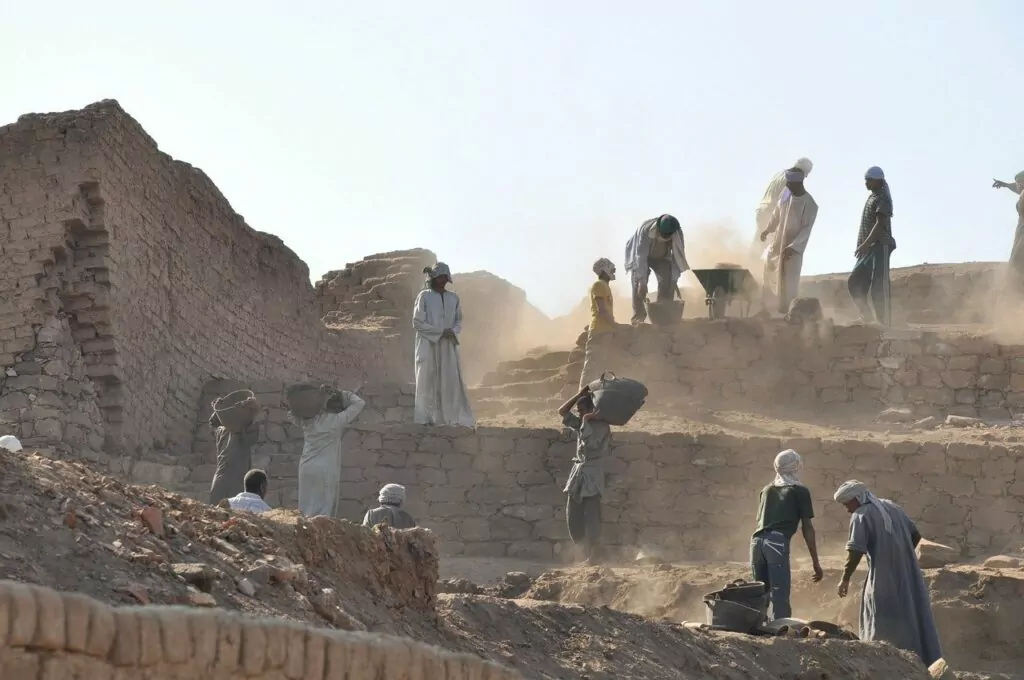
Arab Spring and plane crash in the facts about Egypt
The Arab Spring began when in December 2010, unemployed Tunisian academic Mohammed Bouazizi set himself on fire after the police seized his vegetable cart in protest at living conditions.
The demonstrations spread to Algeria, Egypt, Bahrain, Libya, Yemen and Syria.
The plane crash in Sharm El Sheikhwhich killed 224 people on 31 October 2015 from Russia, was considered an act of terrorism. Russia cancelled all traffic to Egypt, which had a huge impact on tourism.
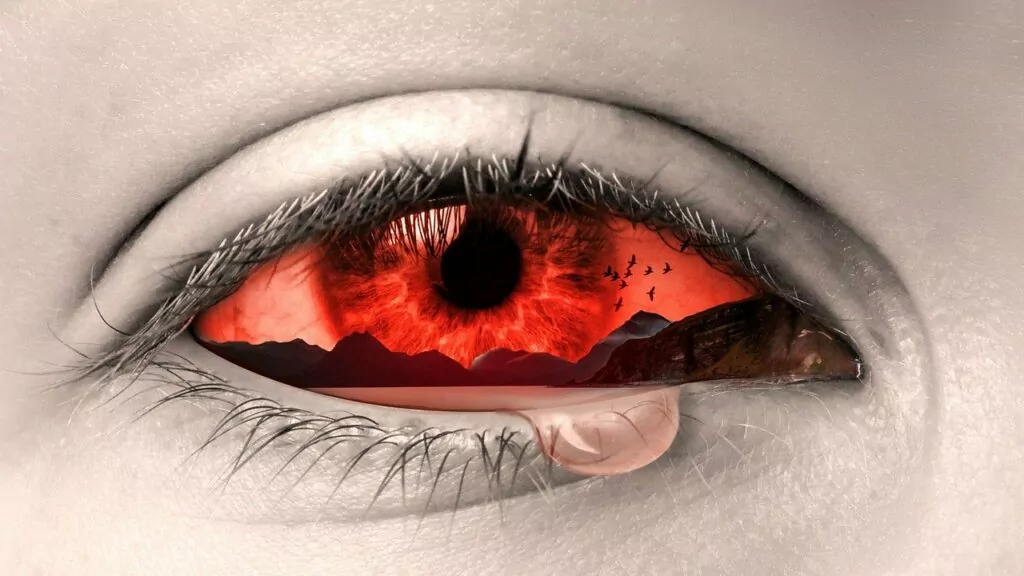
Egypt has the Mediterranean and Red Sea
Throughout northern Egypt is the Mediterranean Sea and to the southeast is the clear Red Sea, which is very famous for snorkelling and diving.
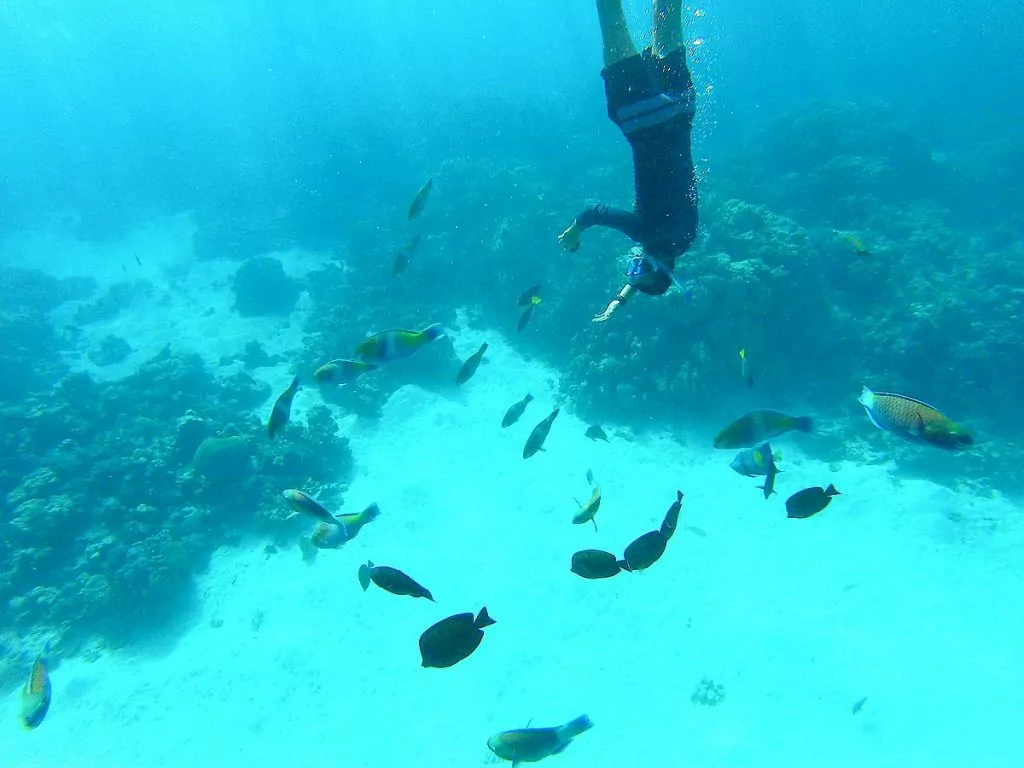
Kemet, Misr or Egypt are the same word in different languages.
Kemet means 'the black earth' and was the native name of the kingdom that emerged in ancient Egypt around 3000 BC. The name refers to the fertile Nile Delta which was flooded every year, in contrast to the surrounding desert, the 'red earth'.
Misr is the Arabic name for Egypt.
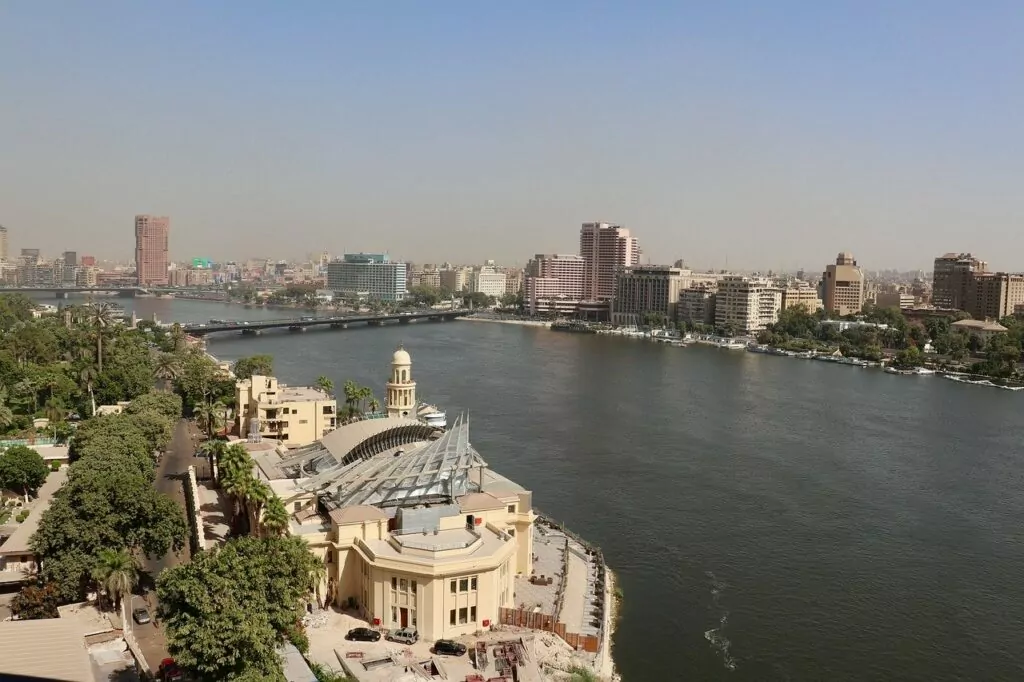
The largest ancient library 'museion' was located in Alexandria
The largest library in antiquity consisted of two parts, one in the Royal Palace of Brucheion and one in the Temple of Serapis. It contained the largest collection of Greek literature in history with some 5,700,000 scrolls.
The library was built around 250 BC after Alexander the Great had taken Egypt. Many thought that Caesar had burned down the library, but after several hundred years of internal fighting, and the Romans taking Alexandria in 30 BC, the city gradually lost its lustre and the library fell into disrepair.
One of seven wonders "the lighthouse of Faros" was located in Alexandria
In 280 BC the Greeks built the 'Lighthouse of Pharos', considered one of the seven wonders of the world. The lighthouse was about 120 metres high and made of marble. The lighthouse began to deteriorate in the 6th century after three earthquakes. Today, the headland remains with a monument to Faros.
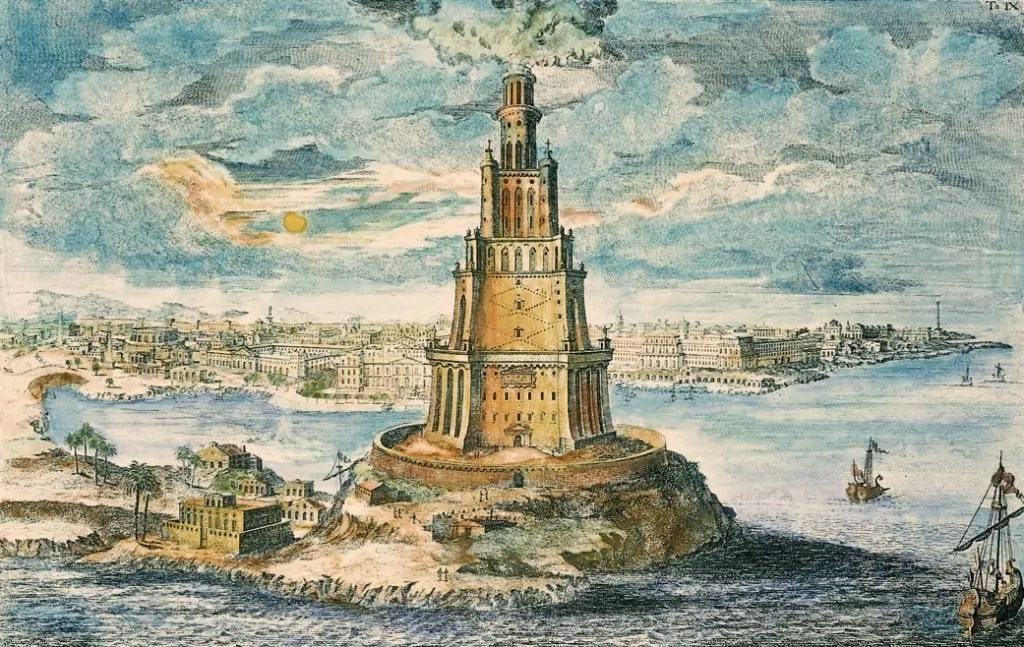
Was Ramses II's as a womaniser true?
Ramses II was married to several women at the same time. It is estimated that he had eight official wives and a number of concubines. But it was Nefertari who is thought to have been his favourite. They married while his father (Seti I) ruled and had ten children together. In fact, Ramses had many children, perhaps more than a hundred offspring.
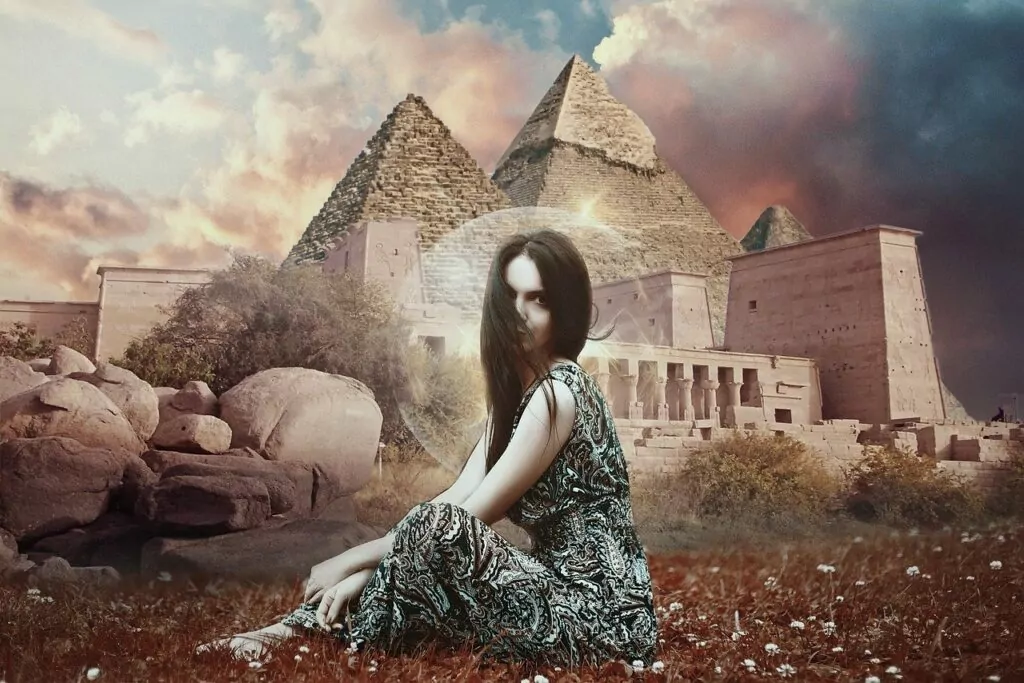
Here are Egypt's capitals for over 5000 years
- Memphis was founded in 3100 BC.
- Thebes (Luxor) became the capital around 2100 BC.
- Ahanasia new capital city around 1700 BC.
- Delta on the Mediterranean Sea new Capital city around 1600 BC.
- Tel El Amarna new capital c. 1350 BC.
- Alexandria new capital c. 305-283 BC.
- Fustat new Arab capital around 641 AD.
- Al-Askar new capital city around 750 AD.
- Al-Qatta'i new capital in 868 AD.
- Fustat again the capital in 905 AD.
- Cairo new capital c. 969 AD.
The 365-day calendar came from Egypt
The calendar we use today started in Egypt around 2730 BC. To keep track of when the Nile rose, they used the calendar and the star Sirius.
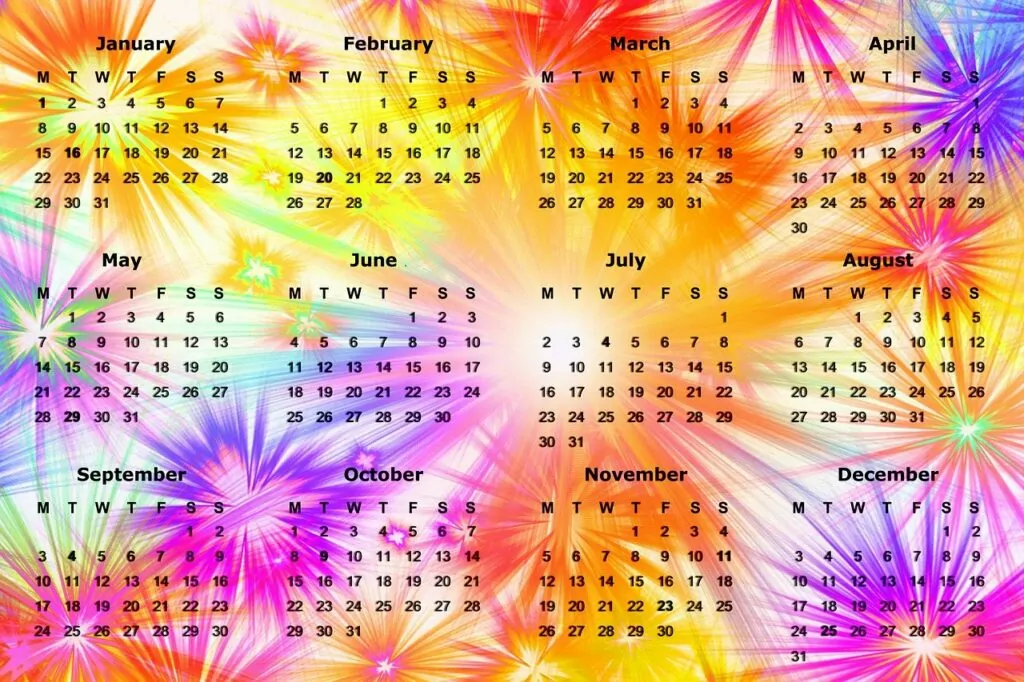
Egypt has the only metro in Africa!
Cairo has an underground railway with 60 stations on three different lines and 19 more under construction. It is the first and only metro in Africa, transporting around four million people every day.

12 million people live in Cairo
There are around 12 million in the centre of Cairo (Al-Qāhira) and up to around 30 million people if the suburbs are included.
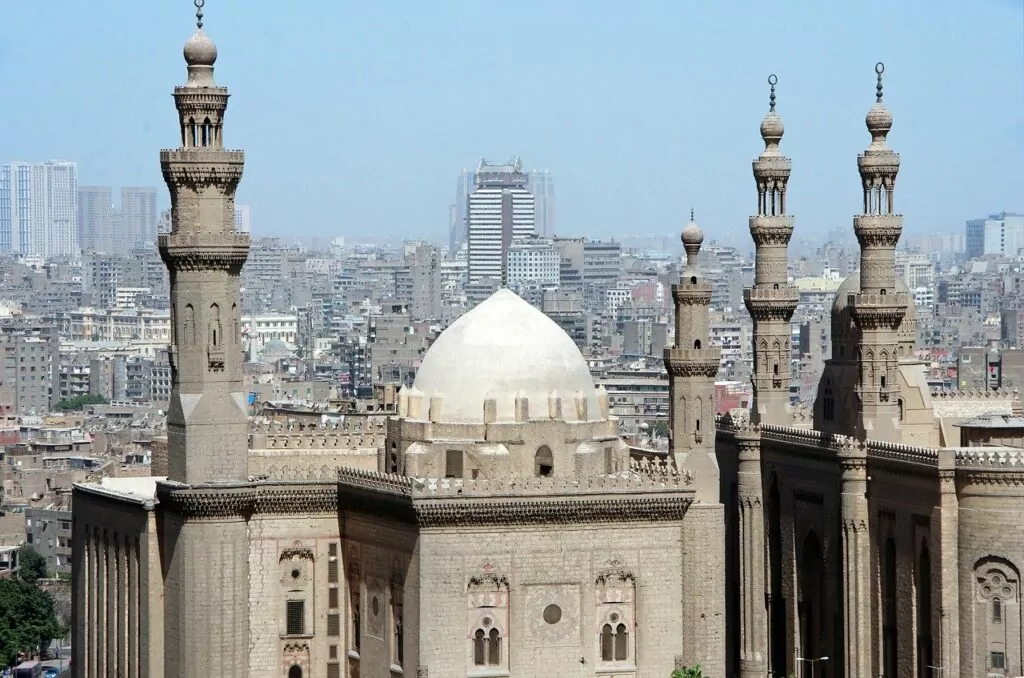
Egyptian Museum in Cairo has 100,000 artefacts
Egypt's amazing history to the Roman Empire is on display at the Egyptian Museum in Cairo. It houses over 100 000 artefacts from ancient Egypt.
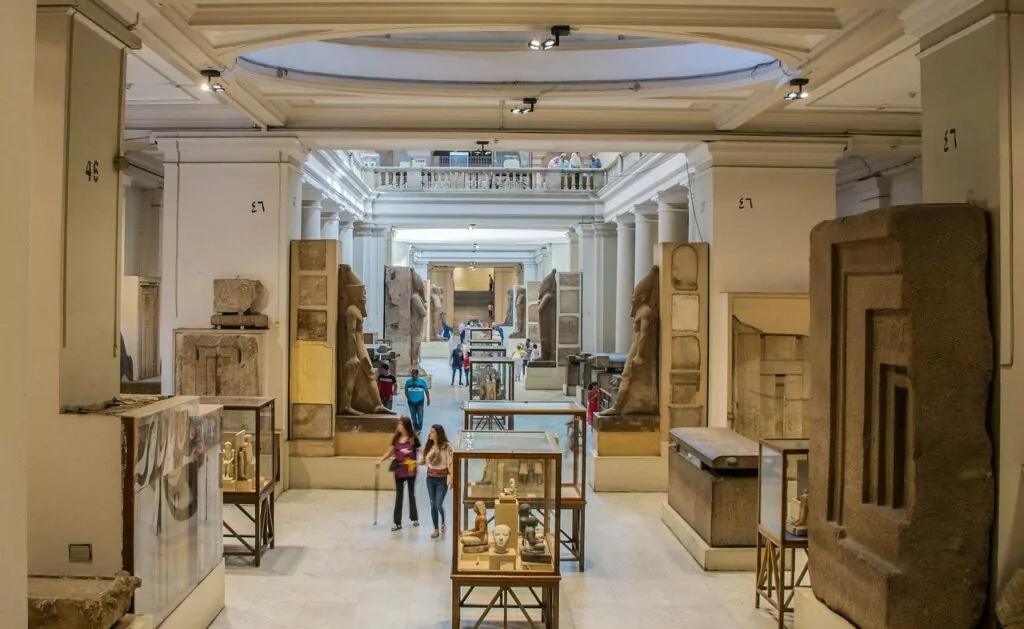
New Grand Egyptian Museum 2022 is in Giza
The new museum is five times as big as the old one in Cairo. 480,000 square metres and is gigantic with a glass wall facing the pyramids of Giza. It includes an 83-tonne granite statue of Ramses II.
Egypt's dynasties, pharaohs and ancient periods
Egypt has had 31 dynasties from 3150-332 BC. The periods are:
- Pre-dynastic period (before 3000 BC)
- Protodynastic era (around 3000 BC)
- Early dynastic period (around 2900-2770 BC)
- The Old Kingdom (around 2650-2150 BC)
- First interim period (around 2150-2040 BC)
- Middle Kingdom (ca 2040-ca 1640 BC)
- Second interim period (approximately 1800-1550 BC)
- The New Kingdom (around 1550-1070 BC)
- Third interim period (around 1070-664 BC)
- First Persian period (343-331 BC)
- Past tense (around 664-331 BC)
- Second Persian period (343-331 BC)
- Ptolemaic Egypt (305-30 BC)
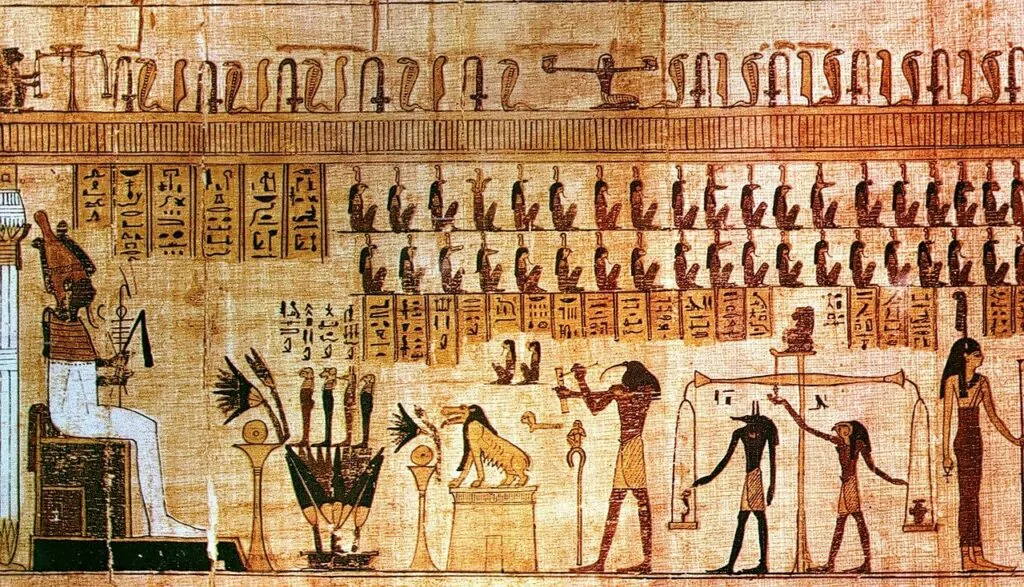
White Desert national park in Egypt
White Desert is unique with its calcium formations. The sandstorms make shapes that resemble rabbits, sponges and turtles. You can also see the Black Desert and Crystal Mountain in western Egypt.
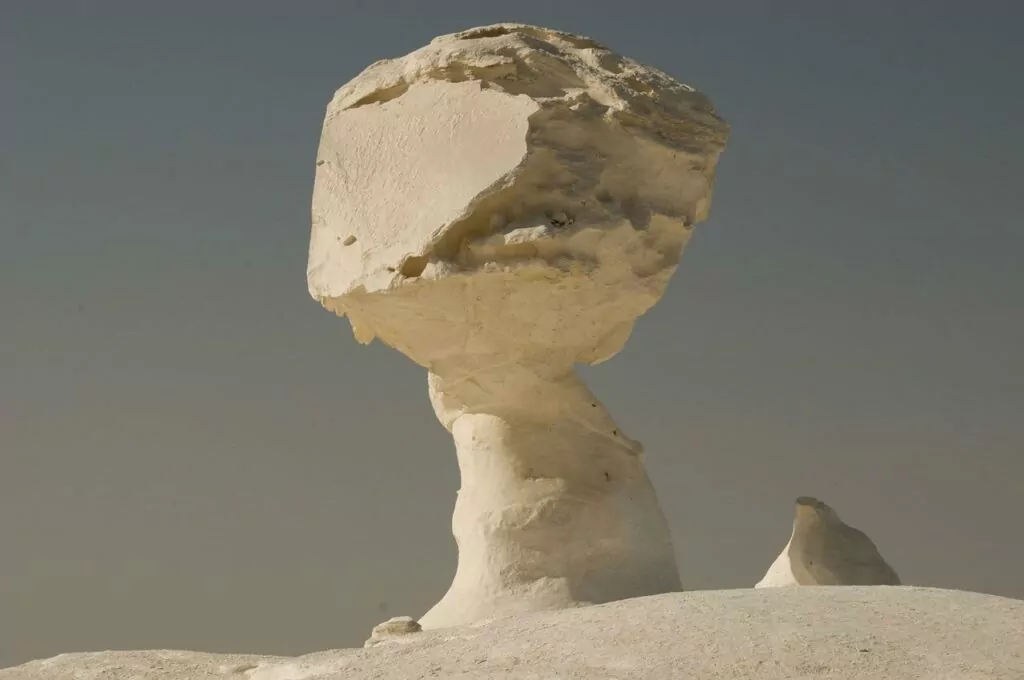
Ras Mohammed National Park in Sharm el- Sheikh
Ras Mohammed National Park is located on the southern tip of the Sinai Peninsula, about 10 kilometres south of Sharm el-Sheikh. The national park is best known for its stunning coral reefs and for diving and snorkelling.
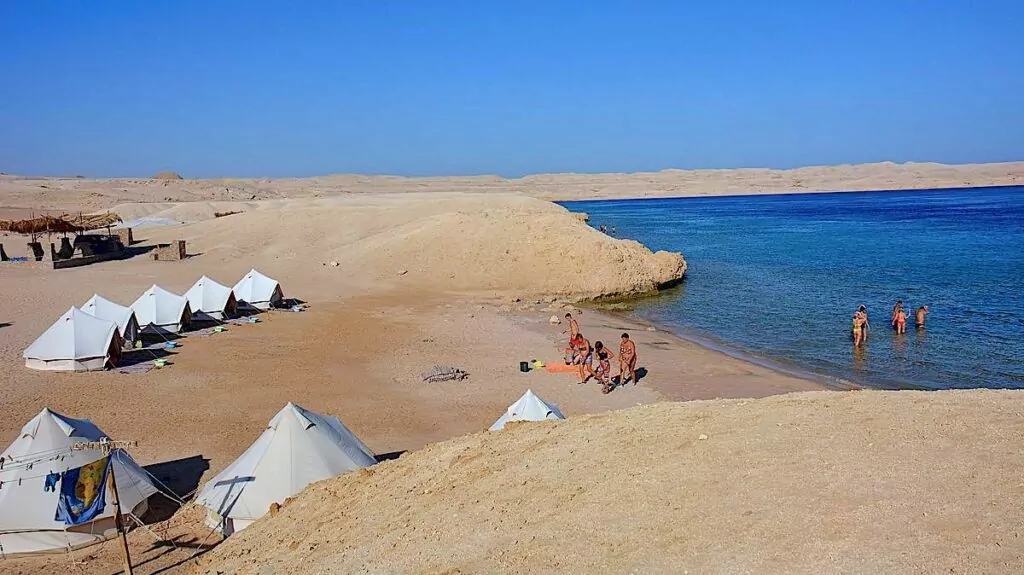
The Quattro Sink is the world's largest submarine sinkhole.
The Qattara sink is the world's largest with a length of 300 km x 13.5 km and a depth of 133 metres below sea level. It is home to around 300 people and is populated by Berbers.
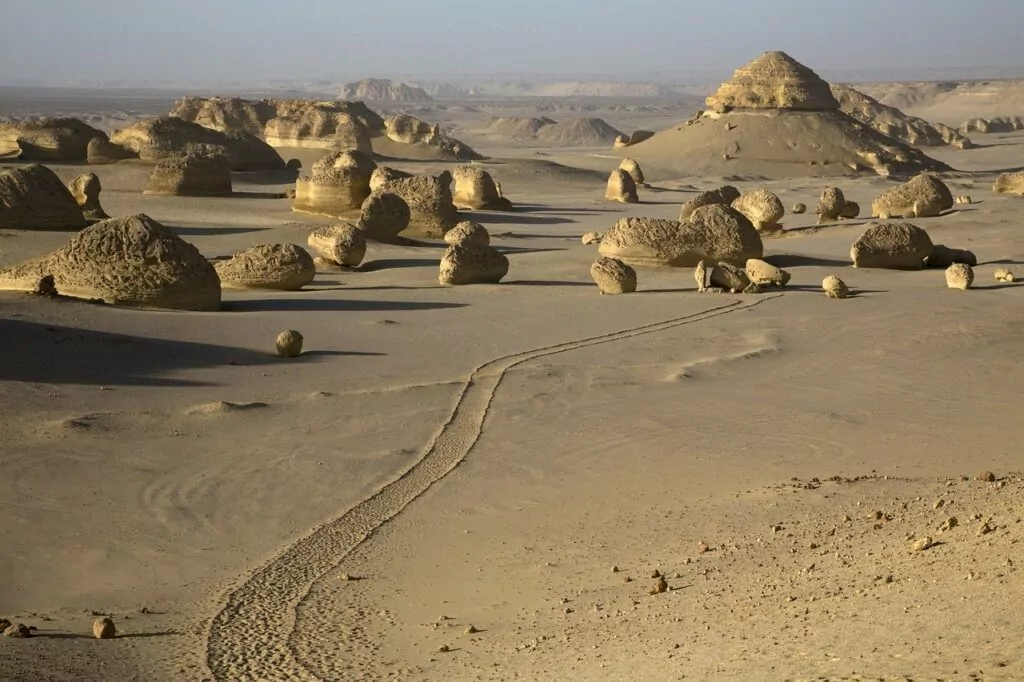
Suez Canal facts about Egypt
Construction of the Suez Canal began 1859. The excavation work took ten years and an estimated 1.5 million people worked on the project.
The Suez Canal is an artificial waterway connecting the Mediterranean Sea to the Indian Ocean via the Red Sea. The Suez Canal was formally opened on 17 November 1869.

The Assuan Dam in Egypt facts
The new Assuan dam is a rock-filled dam located on the northern border between Egypt and Sudan. The dam is fed by the Nile and forms Lake Nasser. Construction of the project began in 1960 and was completed in 1968. The total investment reached 1 billion dollars.
Muhammed Ali Pasha of Egypt
Muhammed Ali Pasha of Egypt lived from 1769 to 1849. He is sometimes considered the founder of modern Egypt. He ordered new cotton plantations, established factories and built canals. He also established Cairo's first secular schools, trained the army and facilitated the study of language and culture.
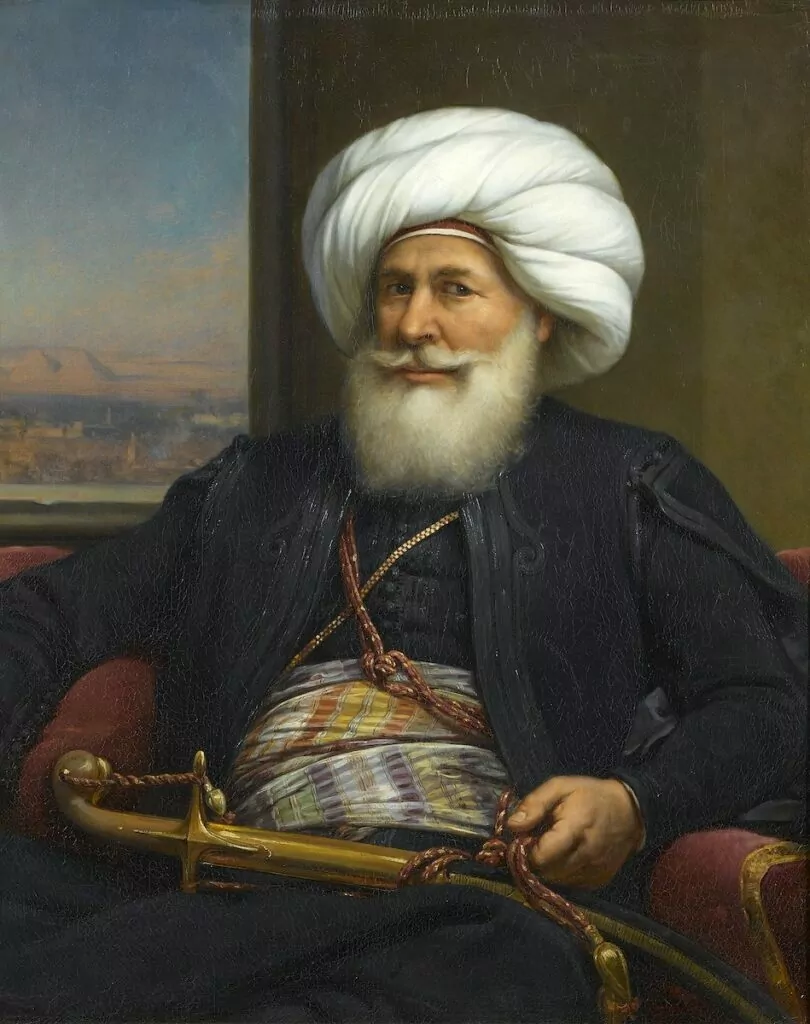
Catherine's Monastery at Mount Sinai
Catherine's Monastery at Mount Sinai in Egypt is a really old monastery with lots of religious history. It includes the burning bush and the place where Moses received the Ten Commandments from God. St Catherine's Monastery is a UNESCO World Heritage Site.
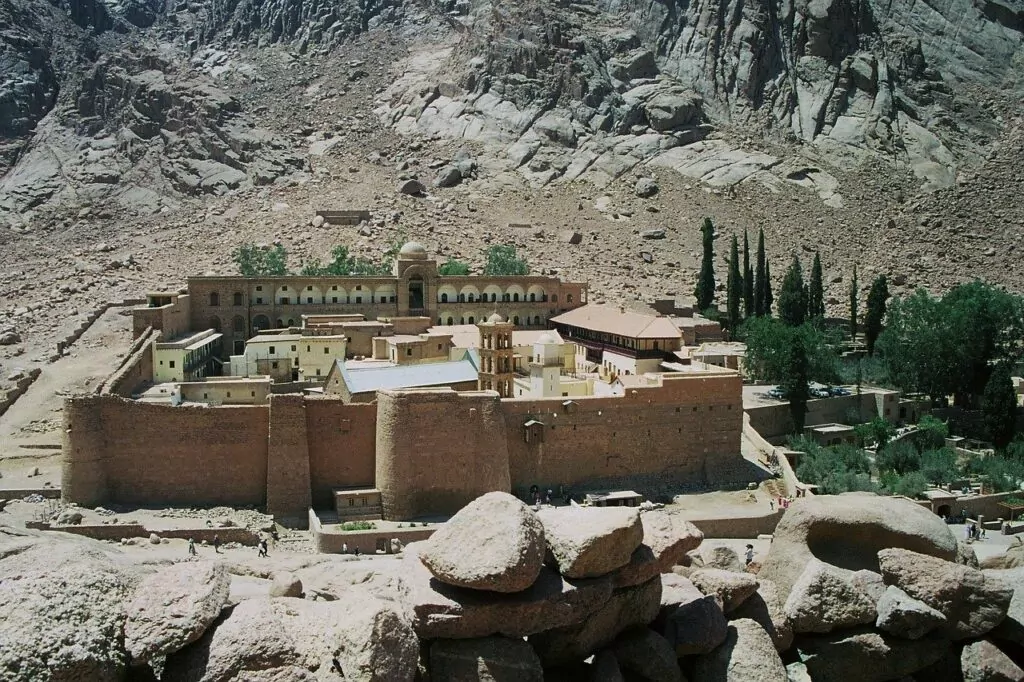
Egyptian pharaohs were very overweight
The fancy pictures don't fit well with the studies that have been done. How about too much beer, honey, wine and bread? The legendary Queen Hatshepsut was not as thin as the story goes.
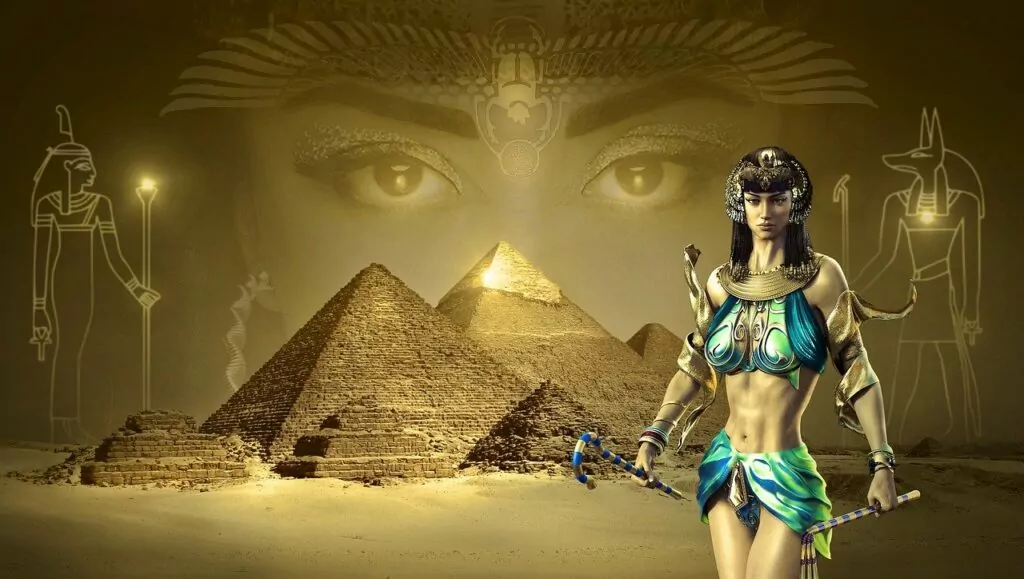
The Young Pharaohs of Egypt
- Tutankhamun took over at the age of eight and ruled for ten years.
- Tutankhamun's grandfather Amenhotep III was ten years old when he became Pharaoh in 1390 BC and was guided by his mother.
- King Pepi II became Pharaoh around 2278 BC, at around six years of age.
- Tuthmosis III was only two when he became Pharaoh in 1479 BC.
- Ptolemy V came to the throne in 204 BC at the age of five.
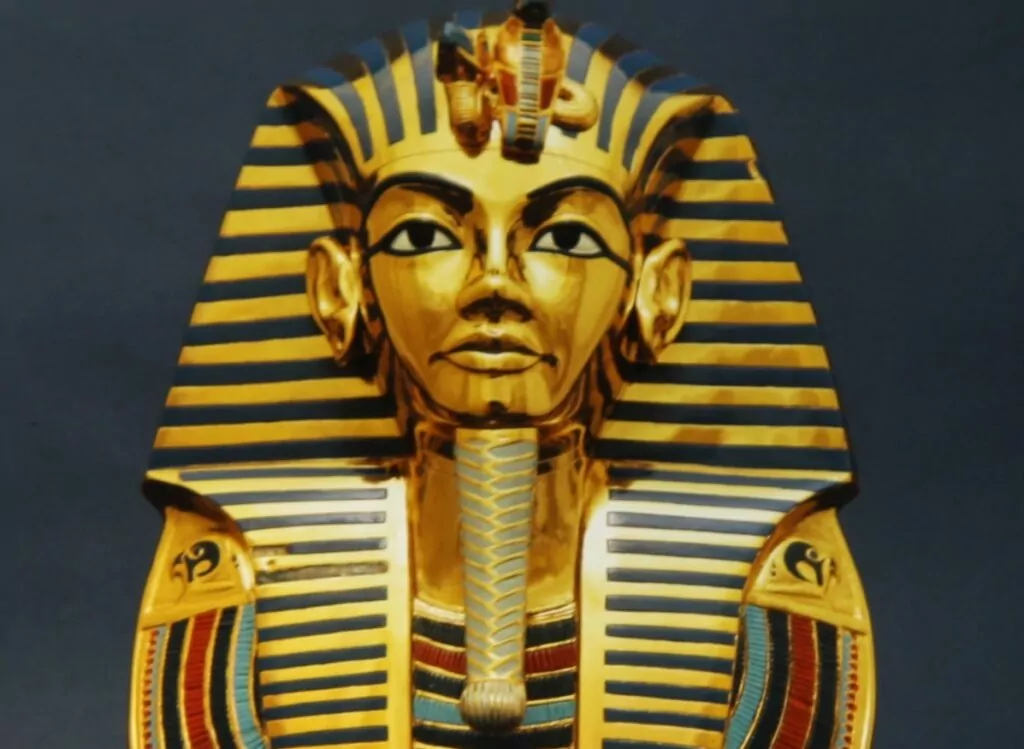
Hatshepsut ruled Egypt as a woman for 22 years
There were no sons and then Hatshepsut became a female pharaoh (one of three). She ruled 1479-1457 BC. When we were here, a guide told us to think "hot chicken soup" to remember her real name. It has worked!
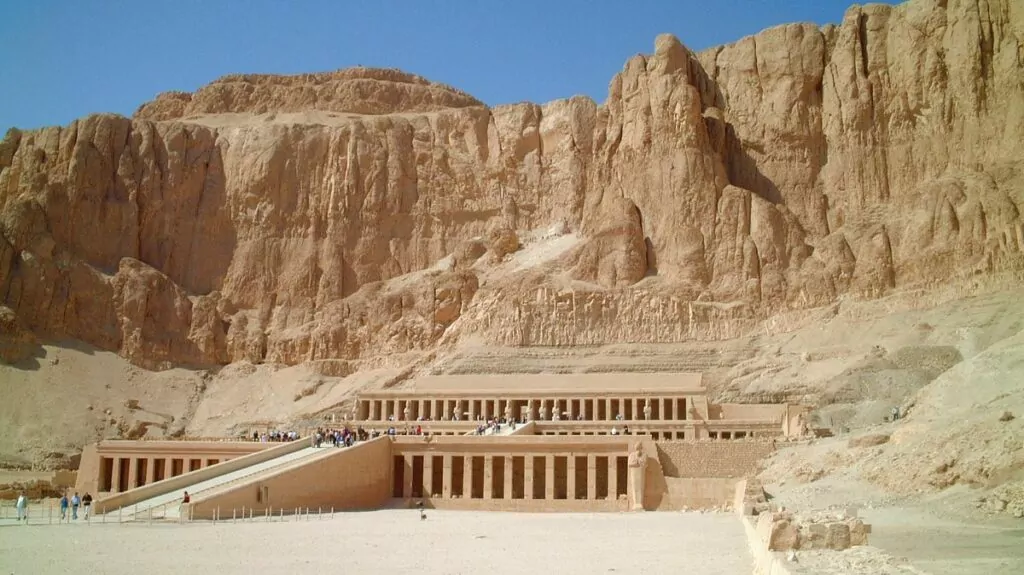
Ramses II - the great pharaoh in facts about Egypt
Ramses II, born around 1303 BC, was pharaoh for about 66/67 years, which is the second longest of all ancient Egyptian pharaohs.
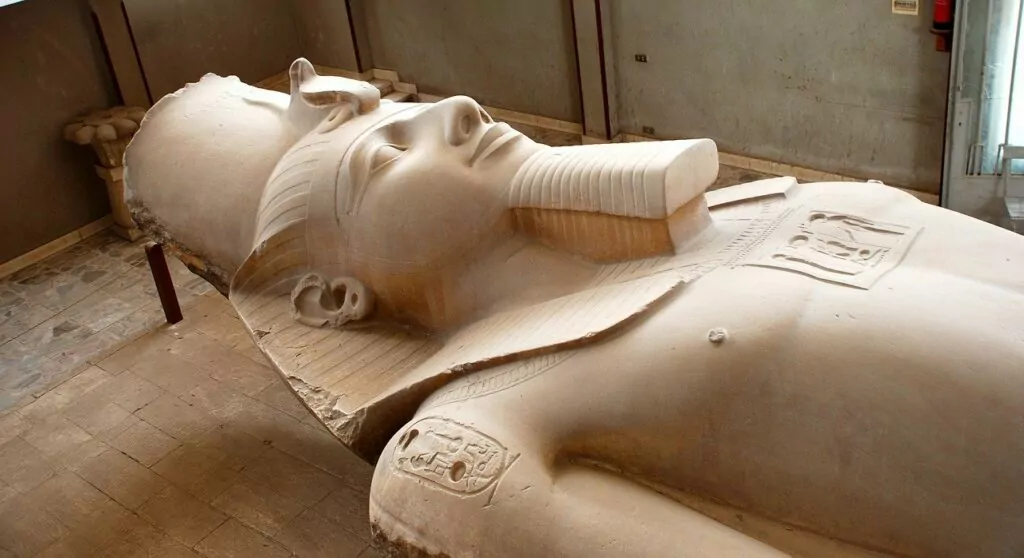
The world's largest obelisk in the facts about Egypt
In the town of Swenet (now Aswan) was a famous quarry where granite obelisks were carved. There is still a half-finished obelisk embedded in the rock, which would have been the largest in history. It is 42 metres high and was estimated to weigh about 1200 tonnes (5 times more than normal), but it cracked and remained in the rock.
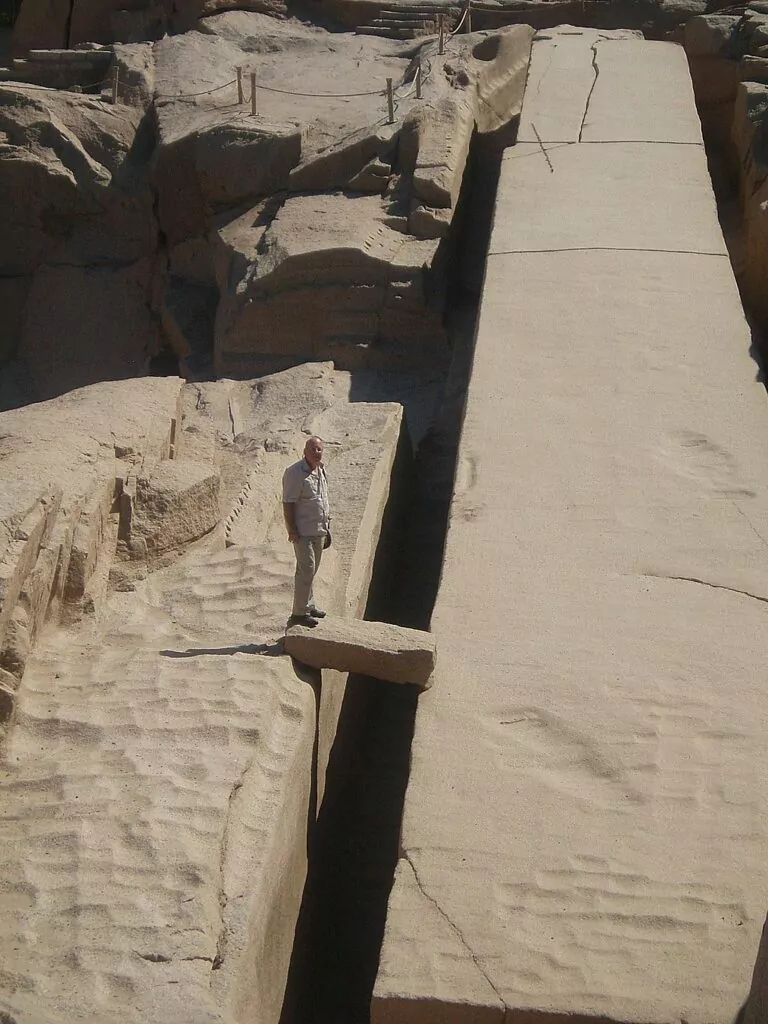
Cleopatra's needles in facts about Egypt
Cleopatra's needles are the three obelisks that have been given away from Egypt.
- In France, there is an obelisk from the Temple of Luxor. Muhammad Ali (viceroy of Egypt in the 19th century) received a large clock from the French King Louis Philippe and in return he gave a 23 metre high, 3000 year old obelisk, which now stands in the Place de la Concorde in Paris.
- In London there is an obelisk of Thutmose III (1450 BC) which was also donated by Muhammad Ali in 1819.
- In New York there is the second of the Thutmose III obelisks, donated by the same man in 1881.
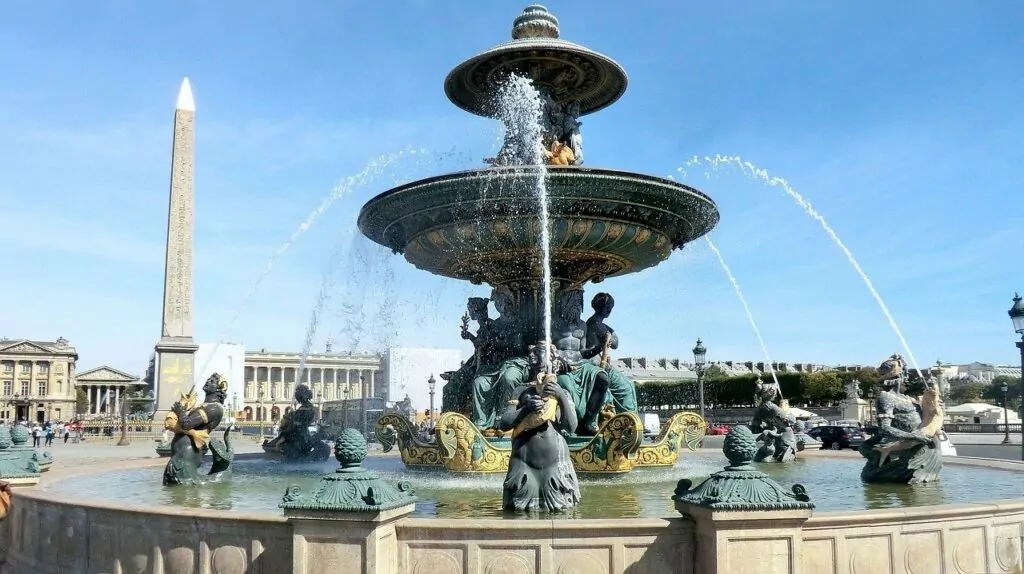
The file obelisk to England
There were two obelisks on the island of File with engraved Greek and hieroglyphics. This helped to understand how the ancient Egyptian language was constructed.
During the 1820s William John Bankes acquired one obelisk and had it transported to his estate in Dorset, England. The estate now belongs to the National Trust and the obelisk still stands in its garden.
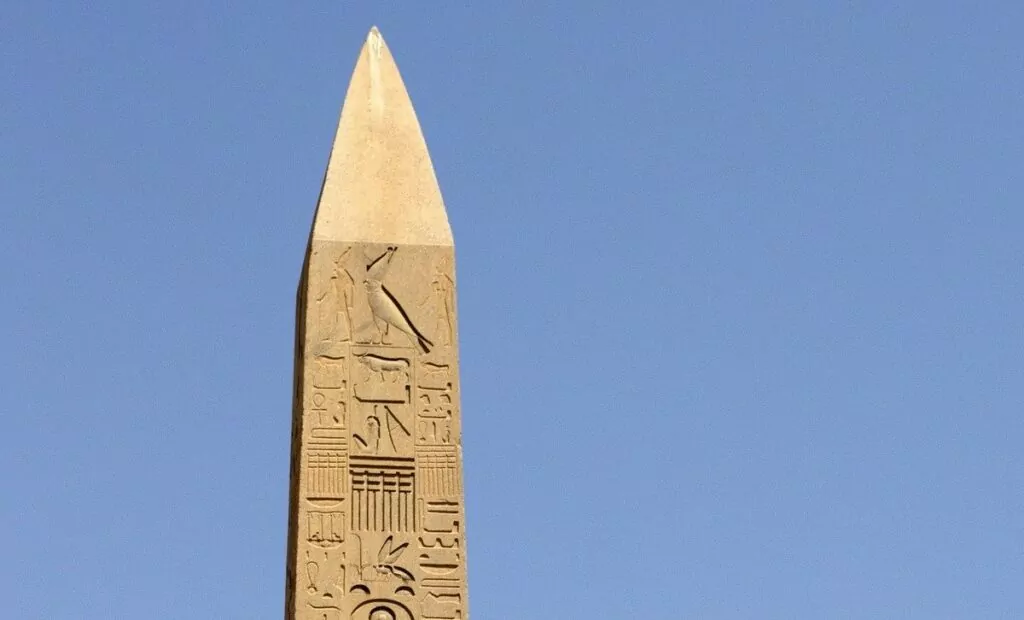

Info and facts about Egypt
- Capital city: Cairo
- Language: Arabic
- Residents: 97.5 million (2017)
- Currency: Egyptian Pound (GDP)
- Time difference: +1 hour
- Religion: Islam, a minority are Coptic Christians
- Flag: The flag of Egypt has three horizontal bands in red, white and black. In the centre of the flag is Saladin's eagle, which is also Egypt's national coat of arms.
- Highest point: Mount Katarina 2637 metres above sea level.
- National anthem: Bilady, Bilady, Bilady (My country, my country, my country)
- National Day: 23 July

